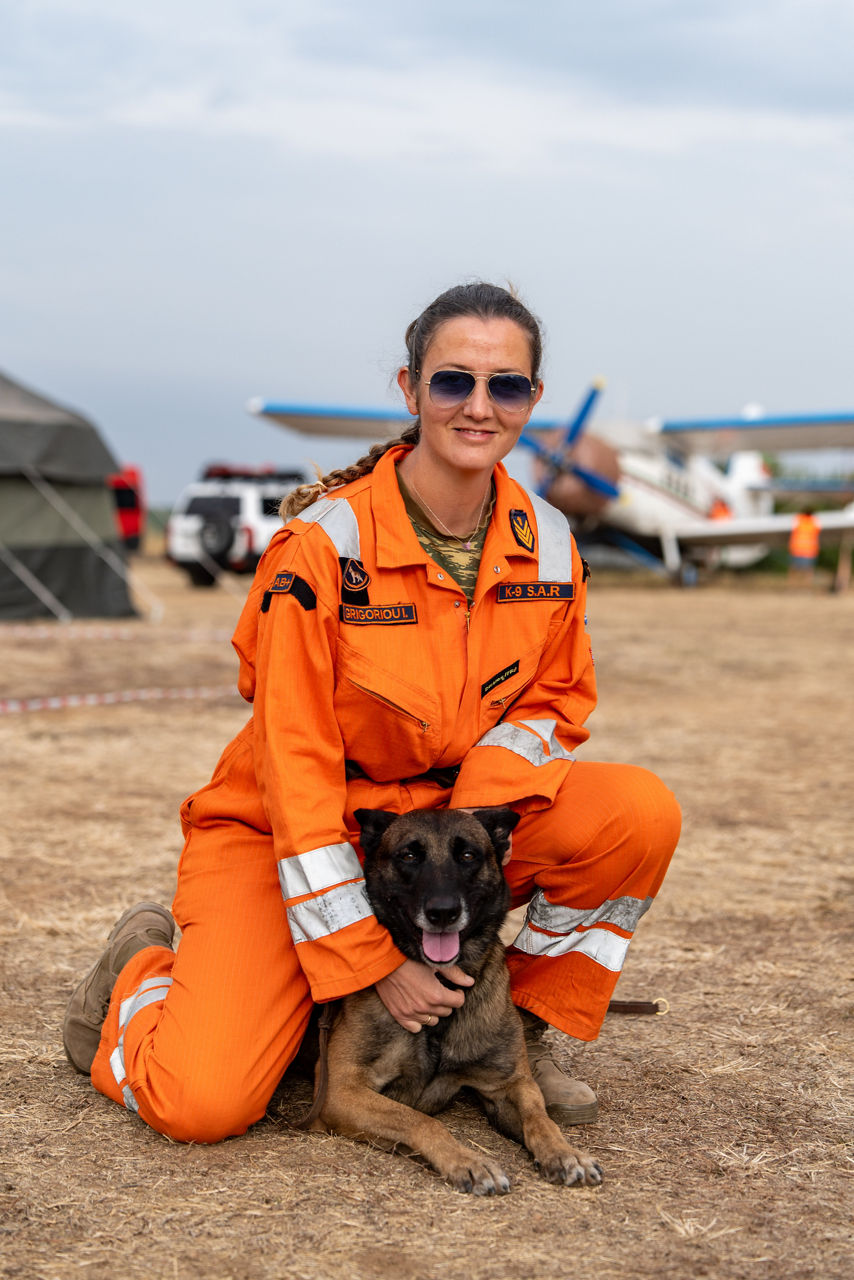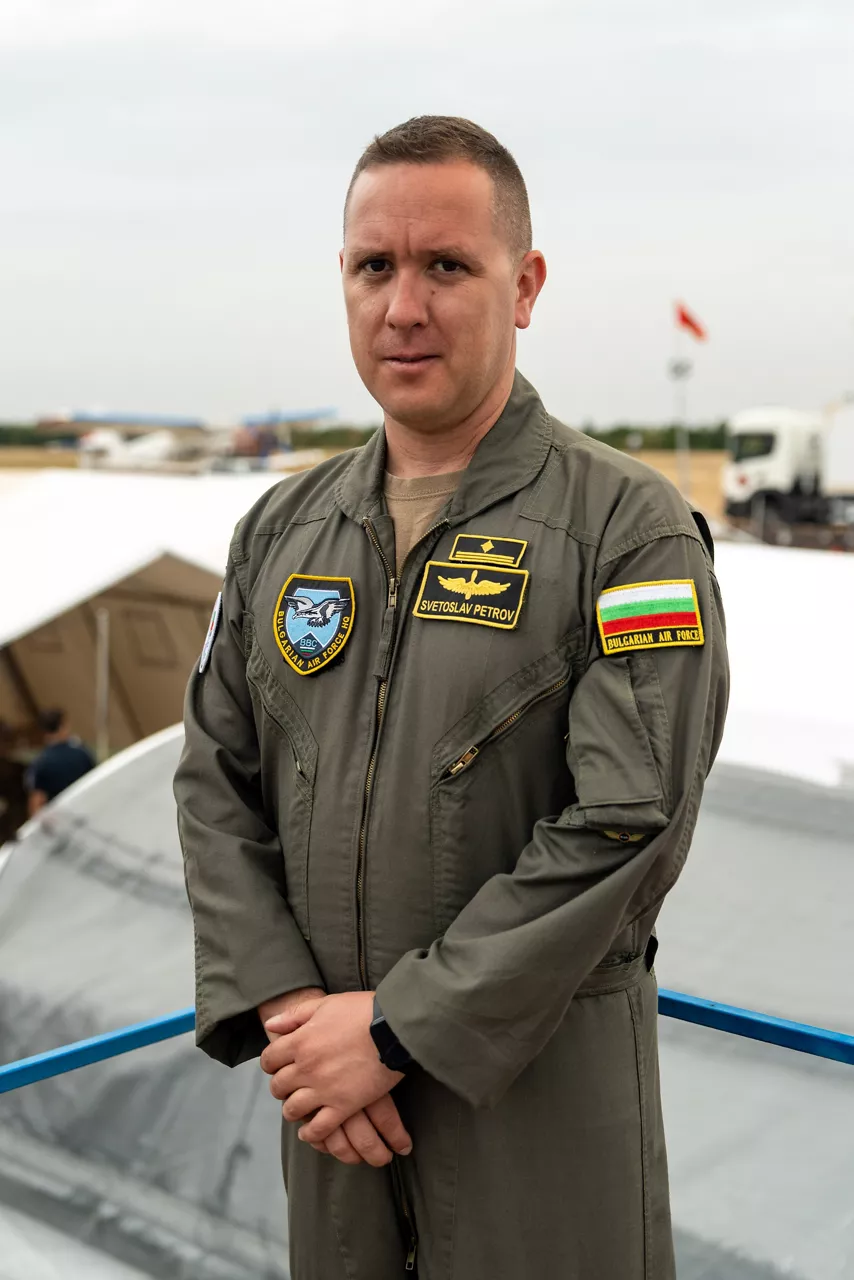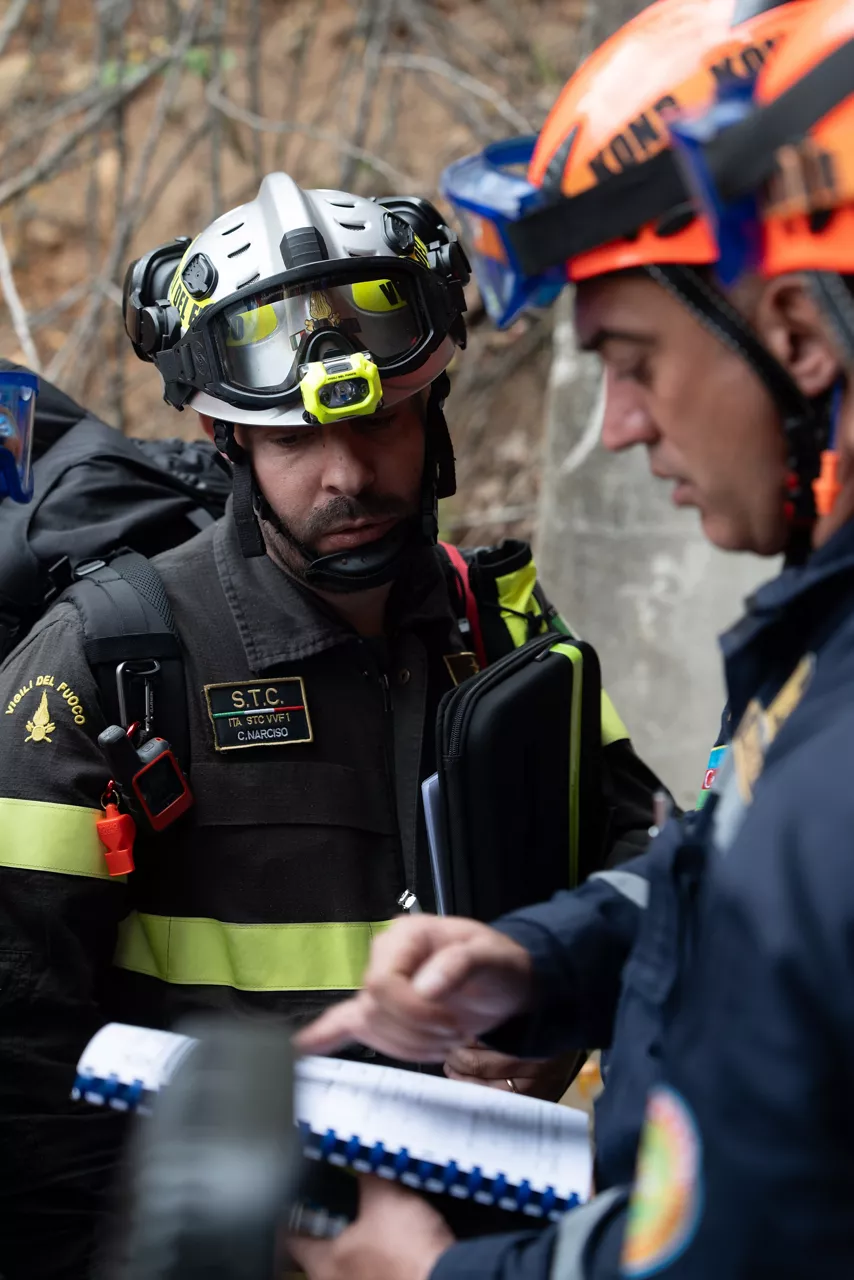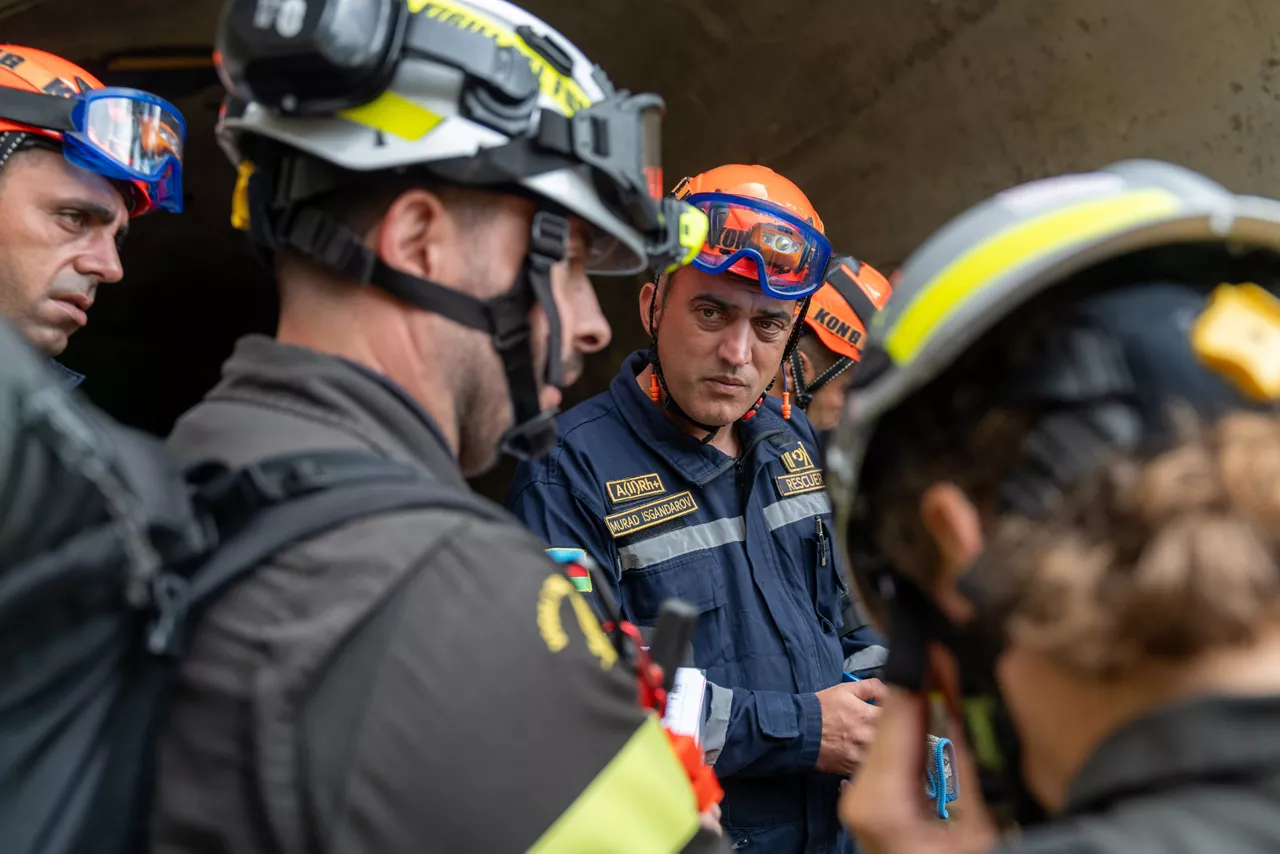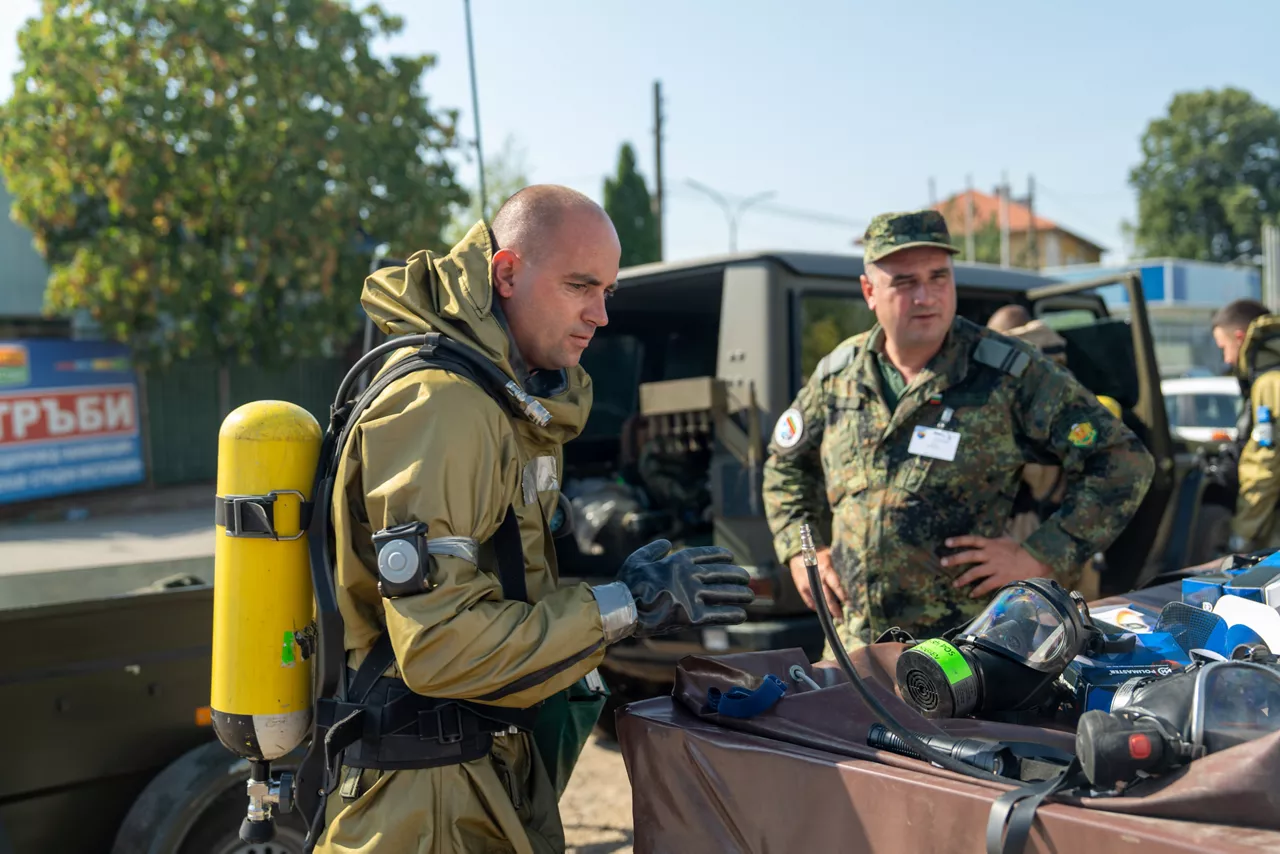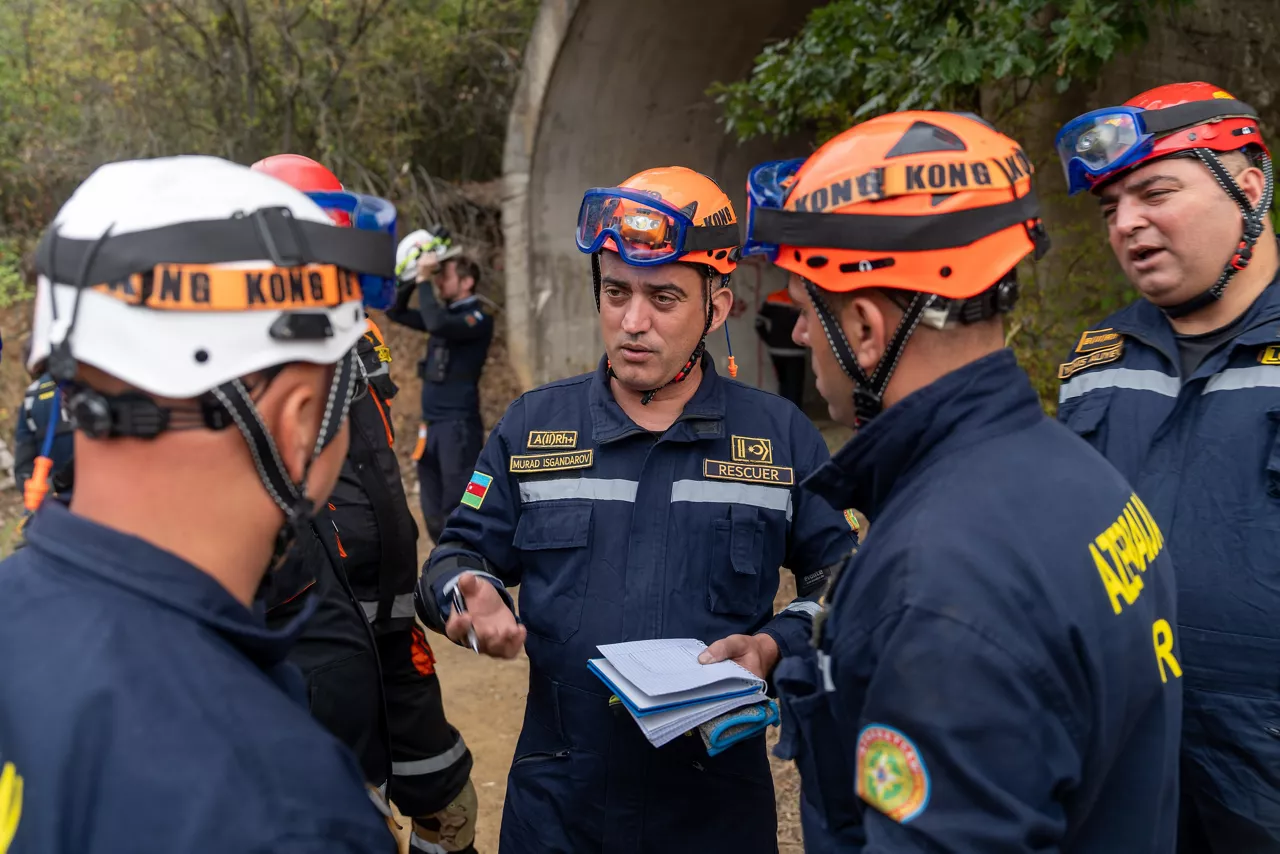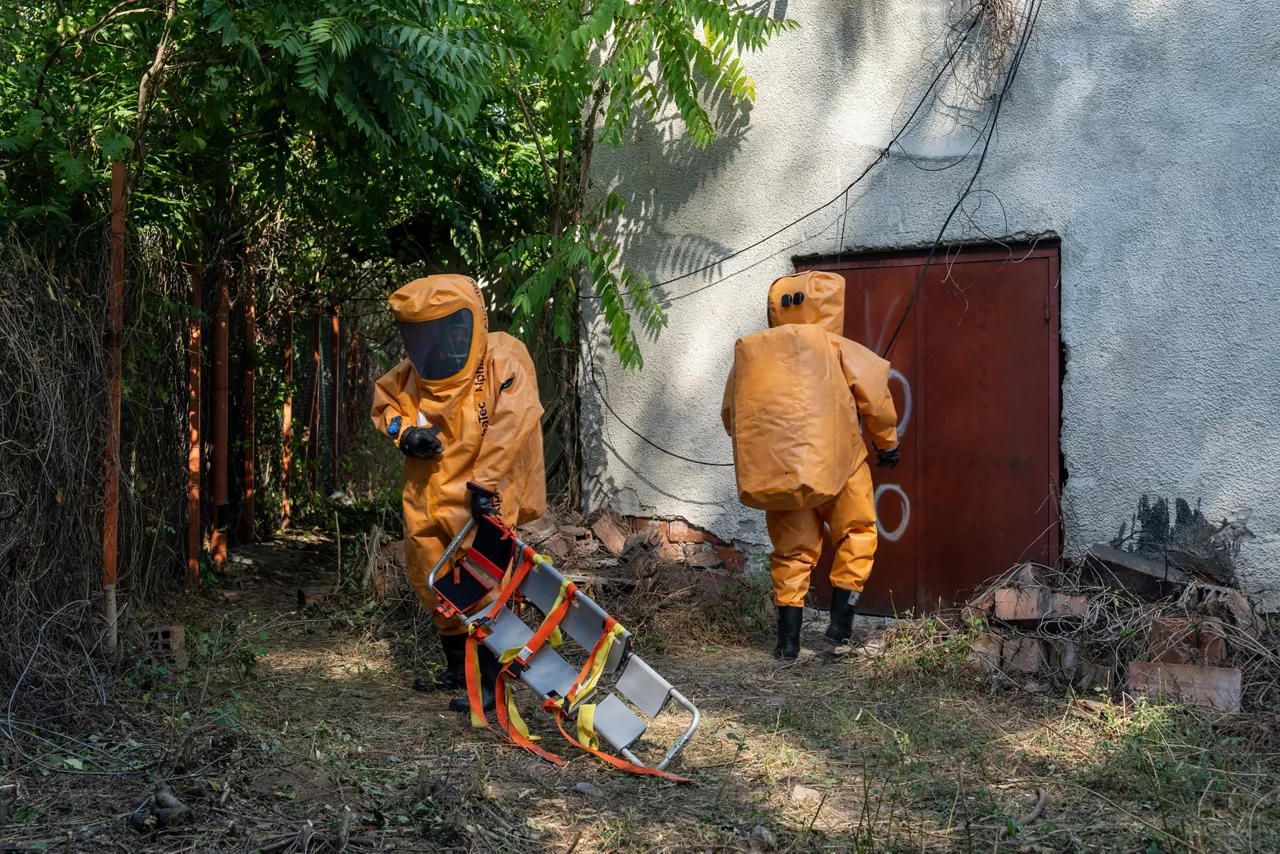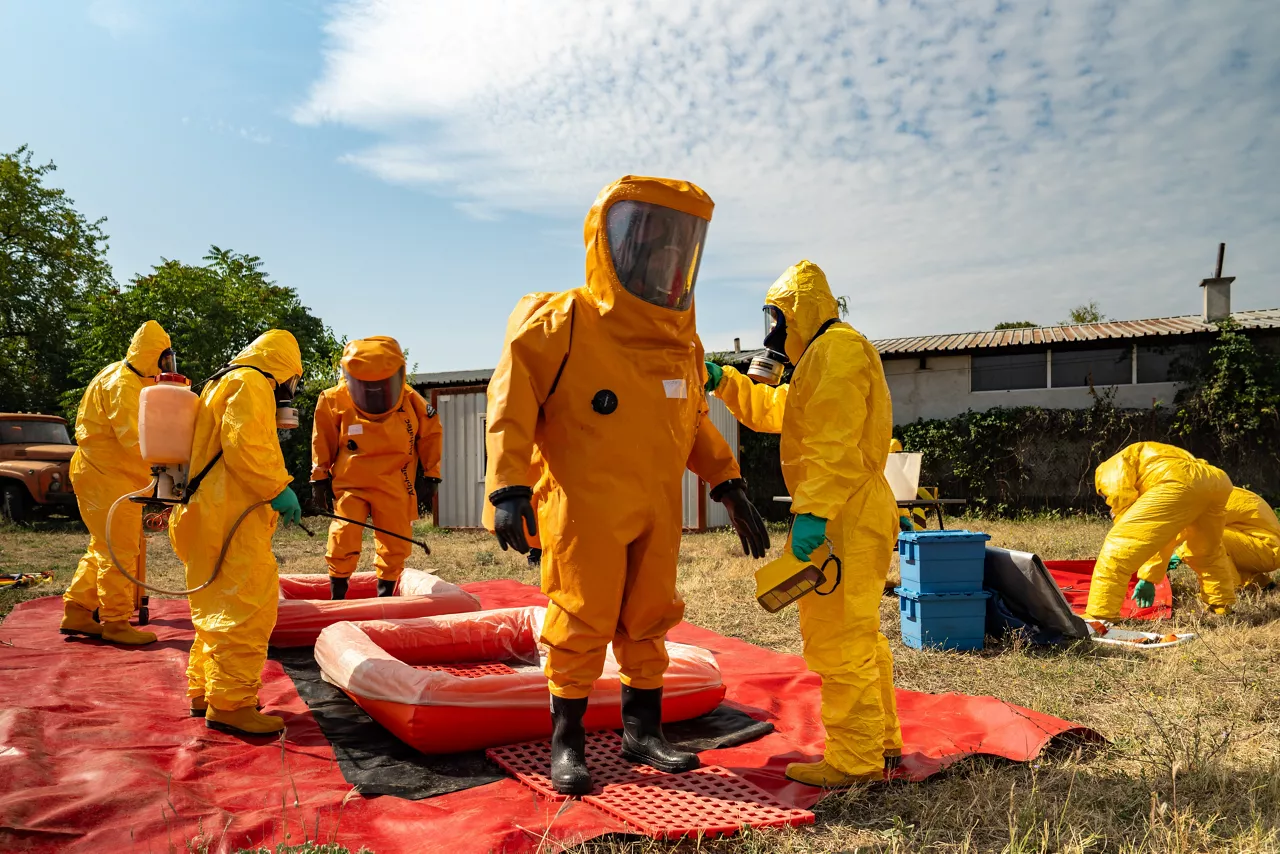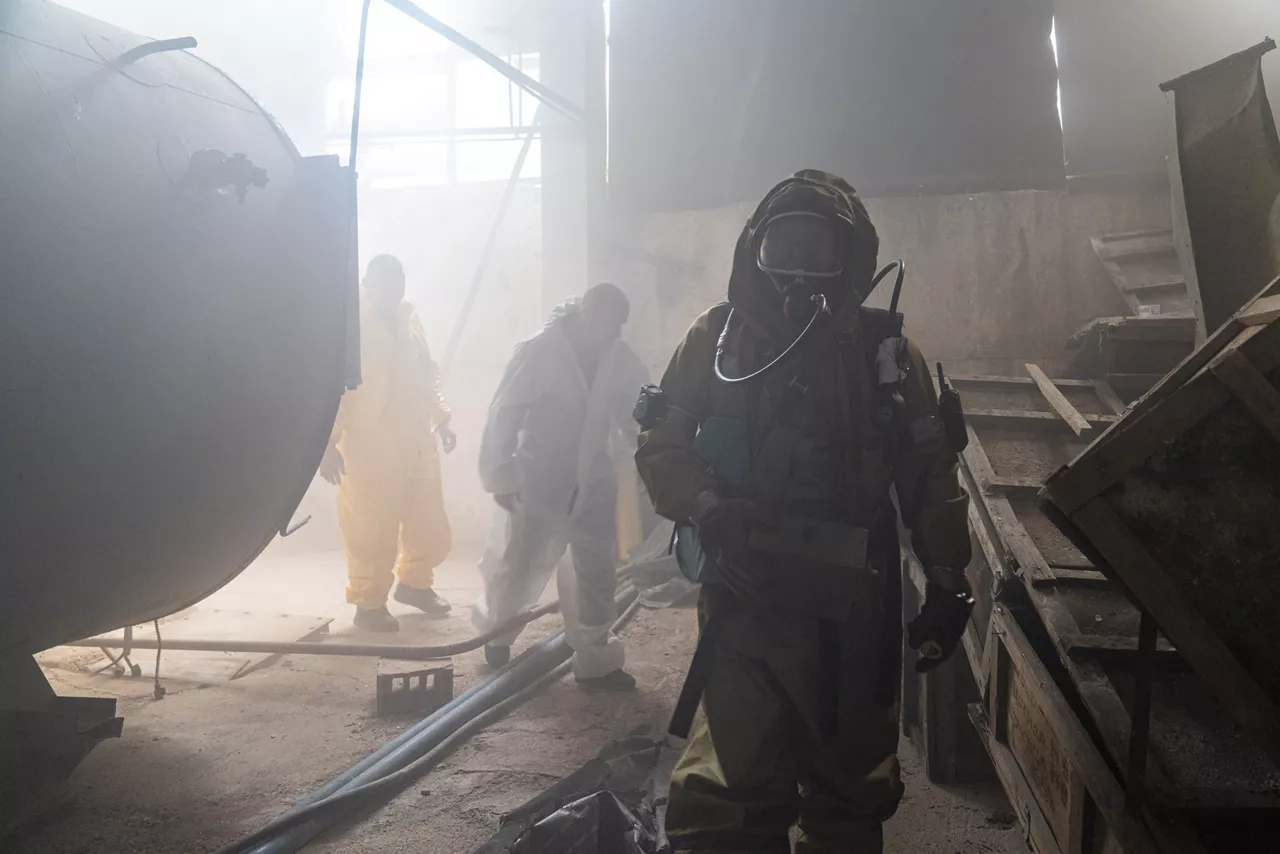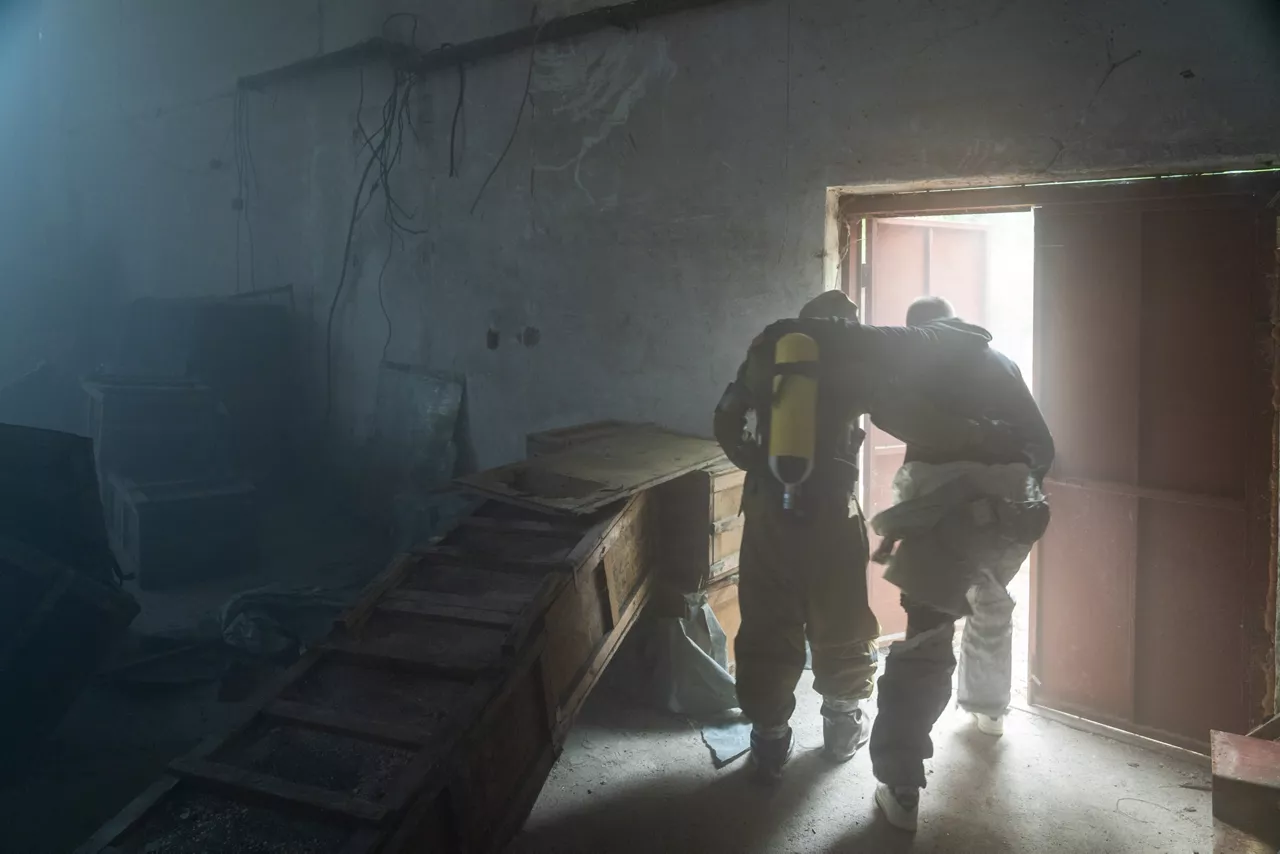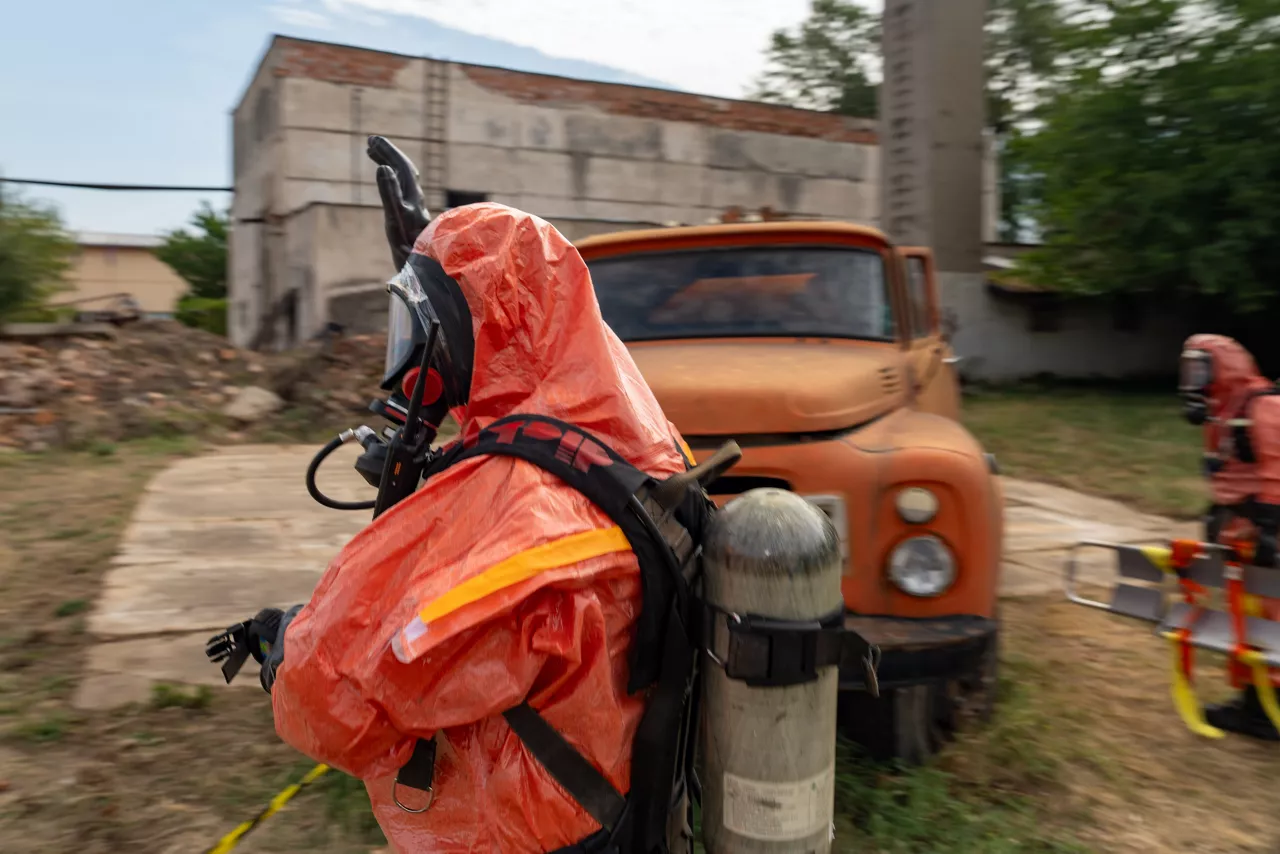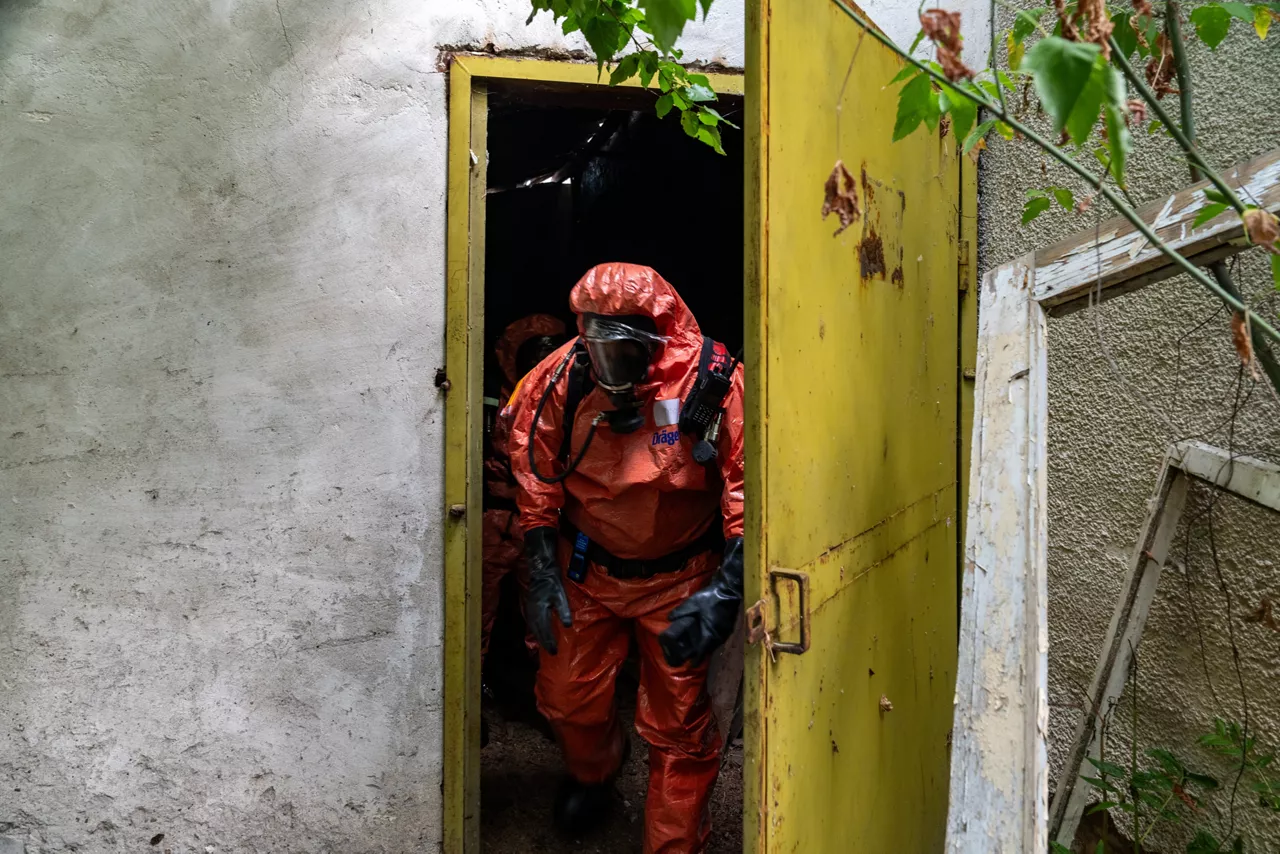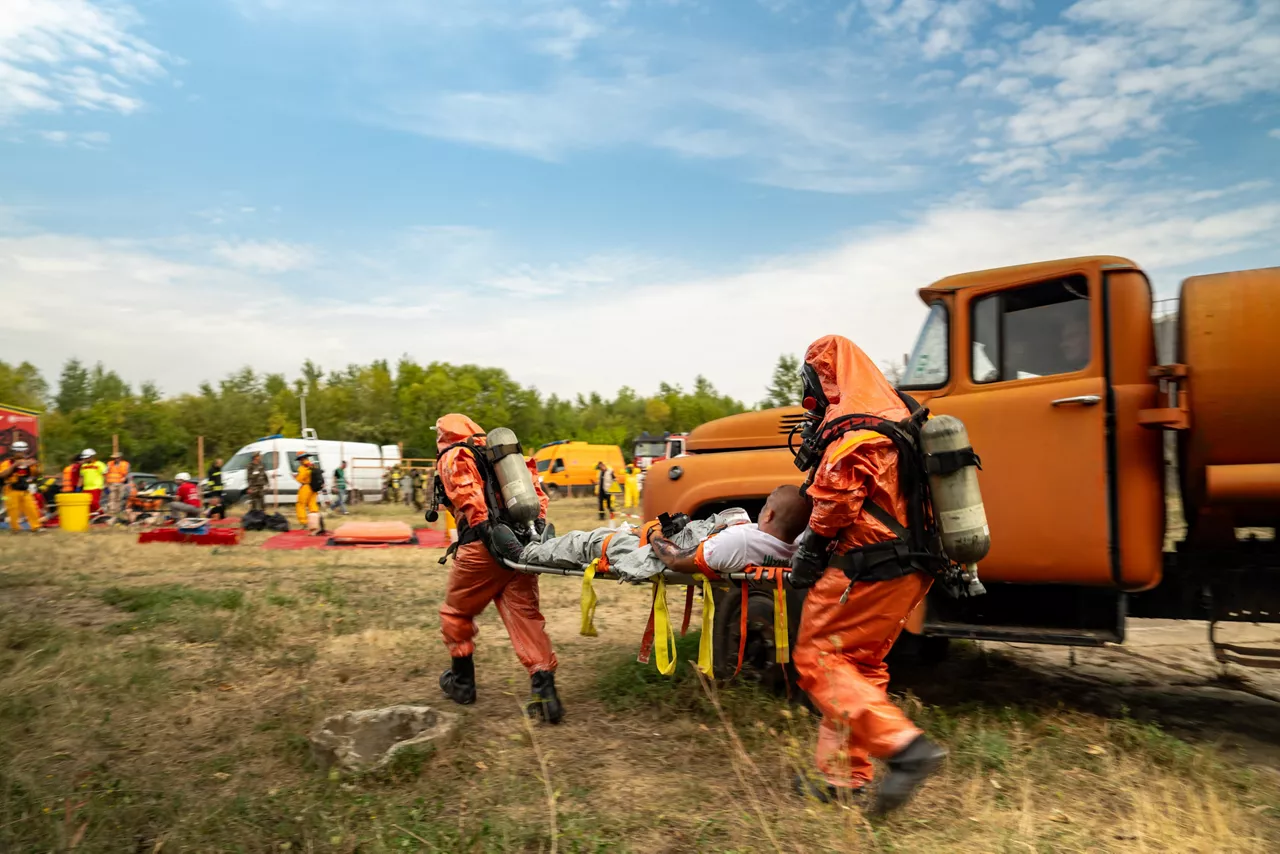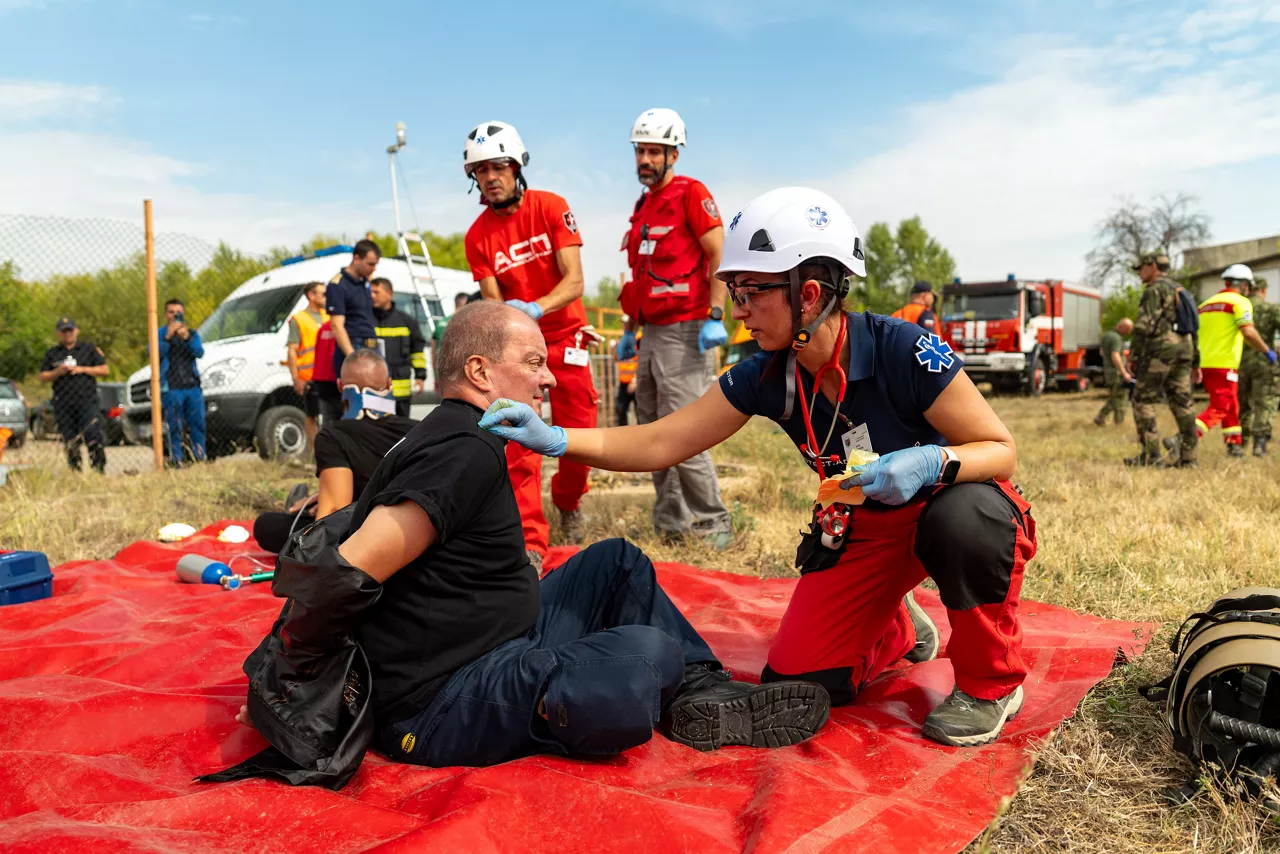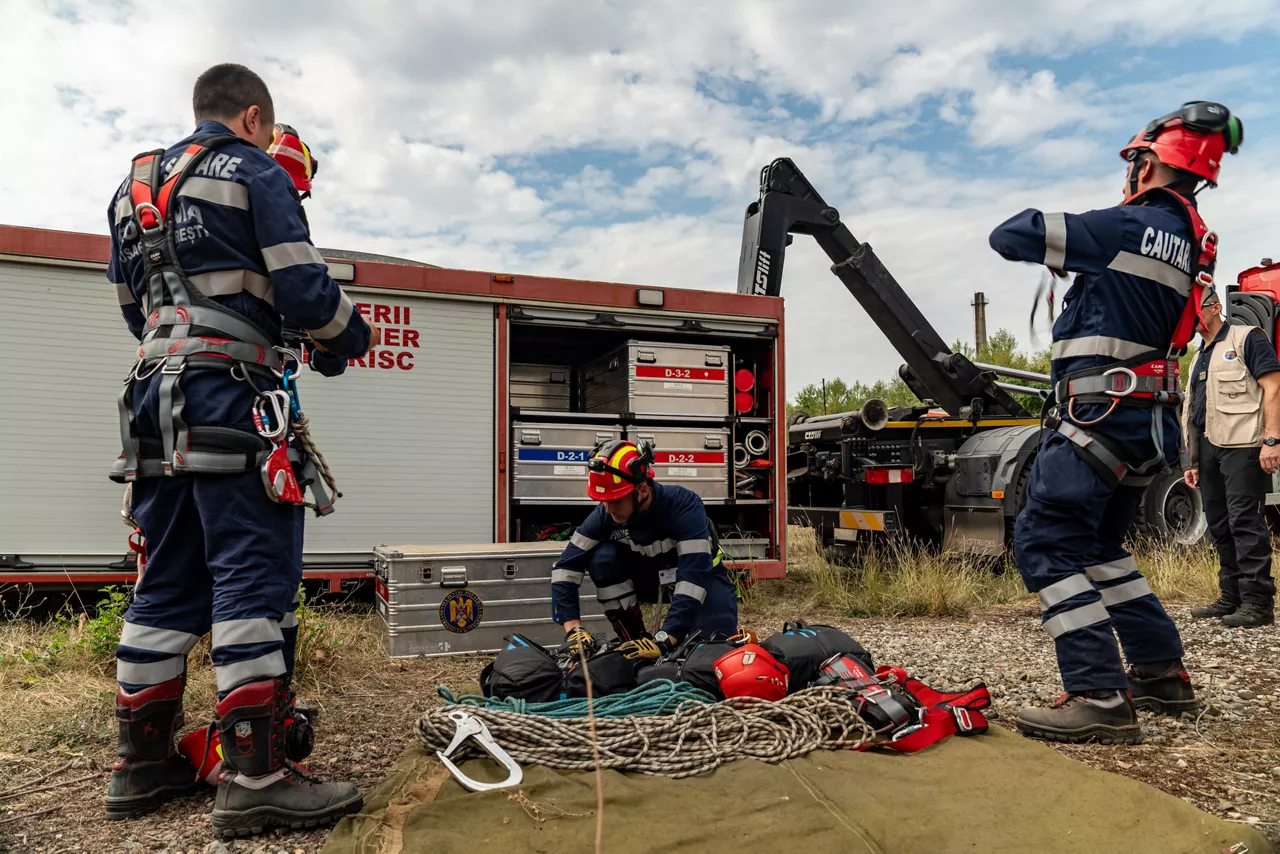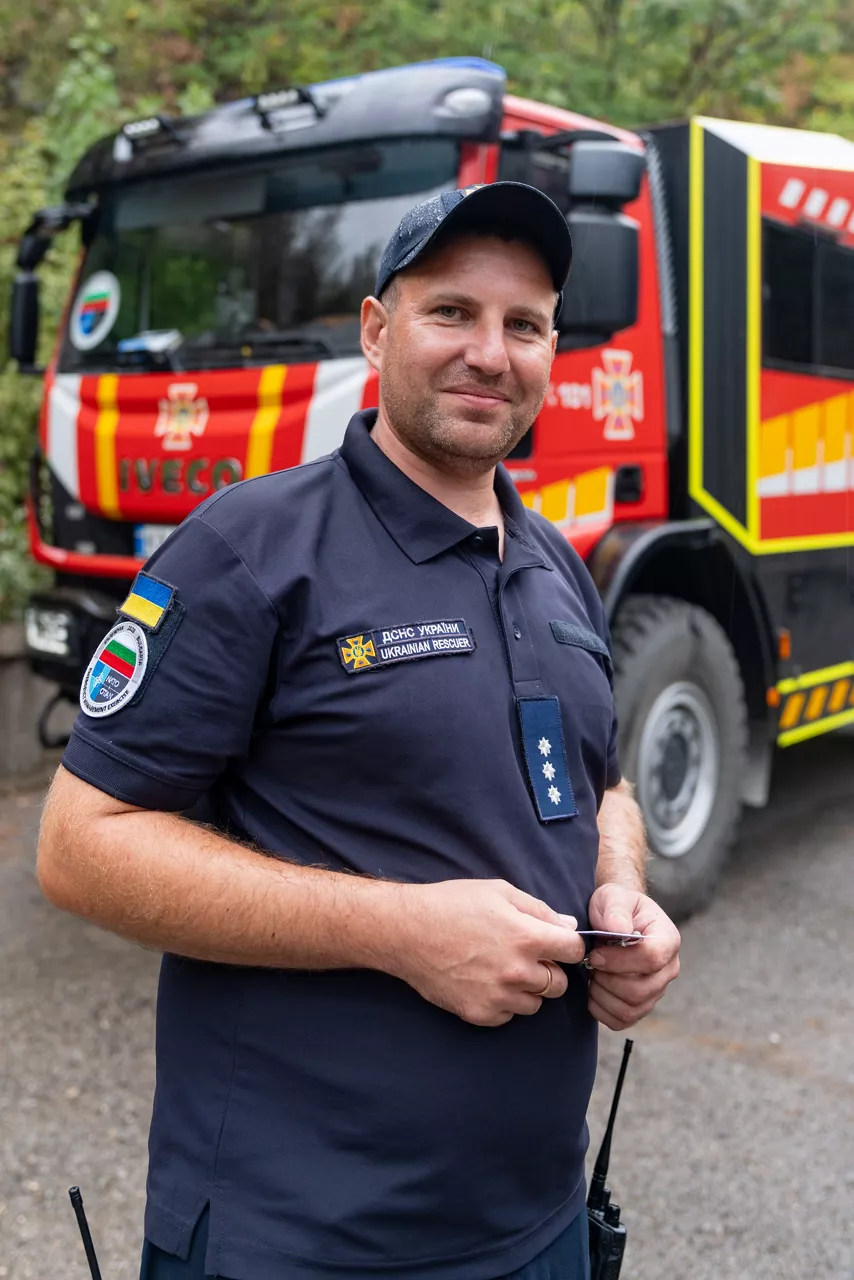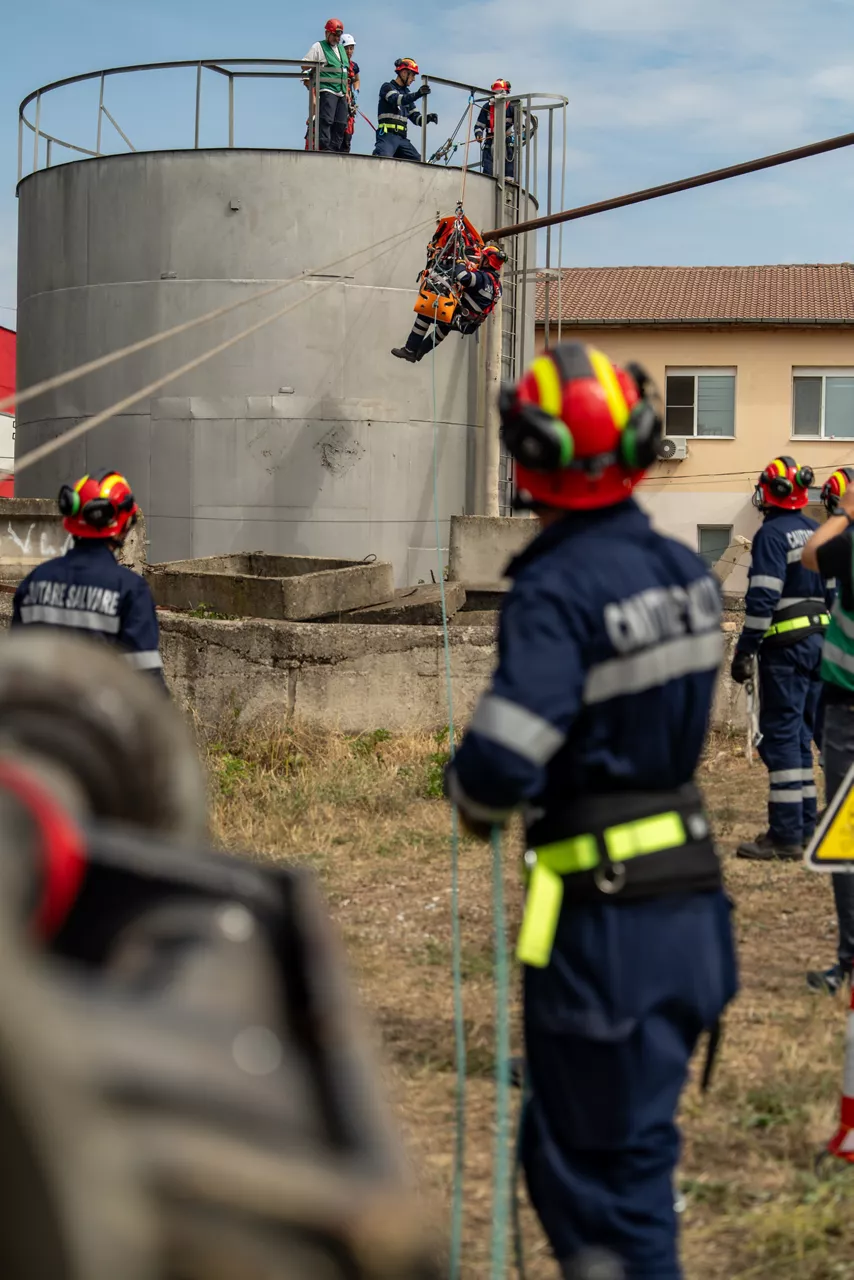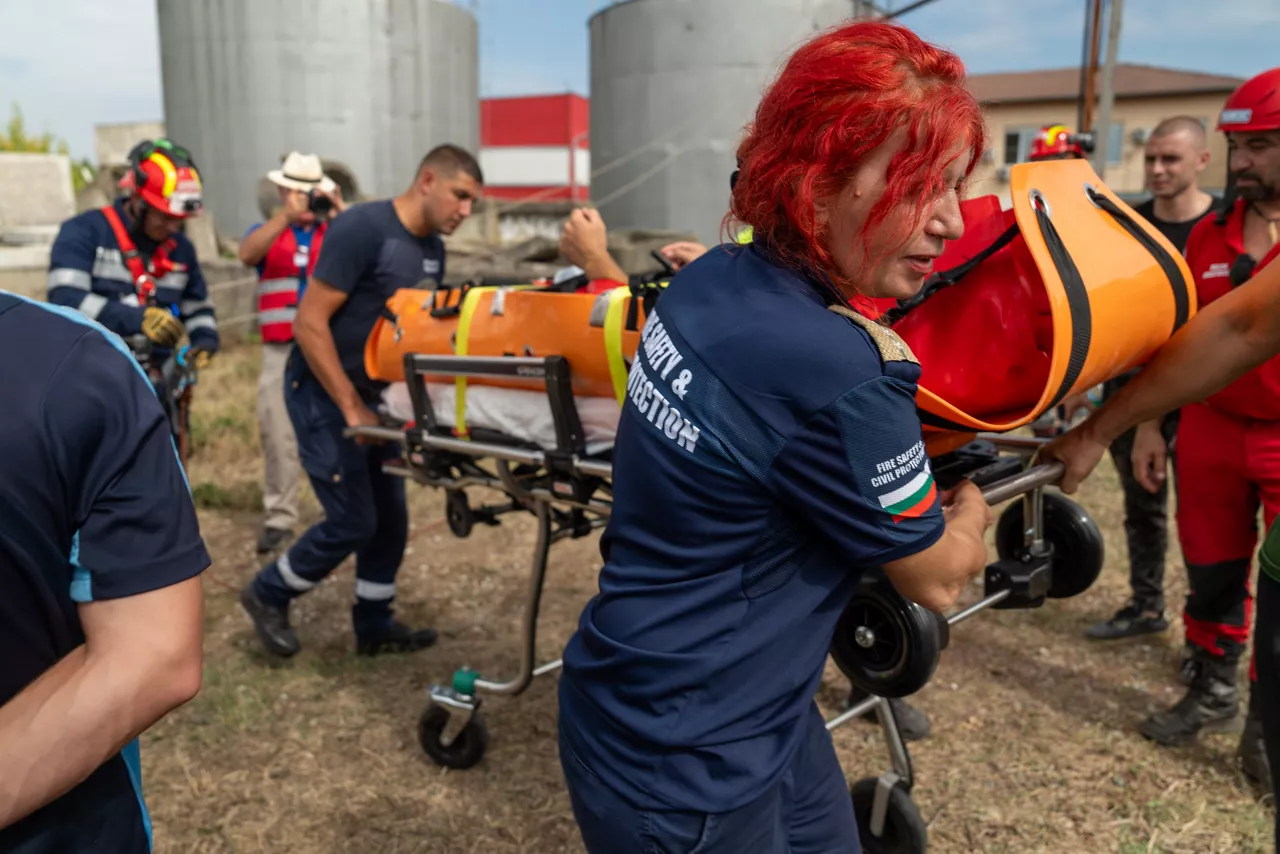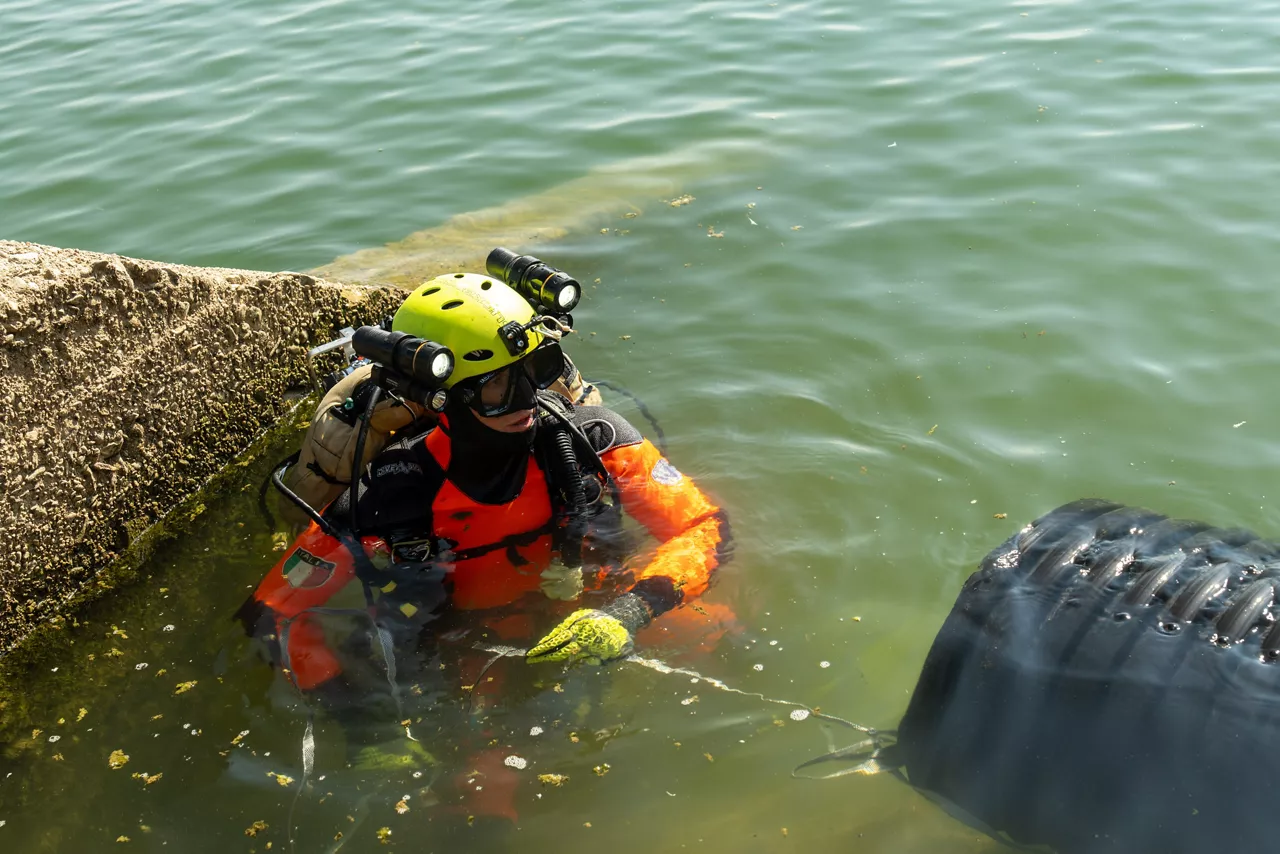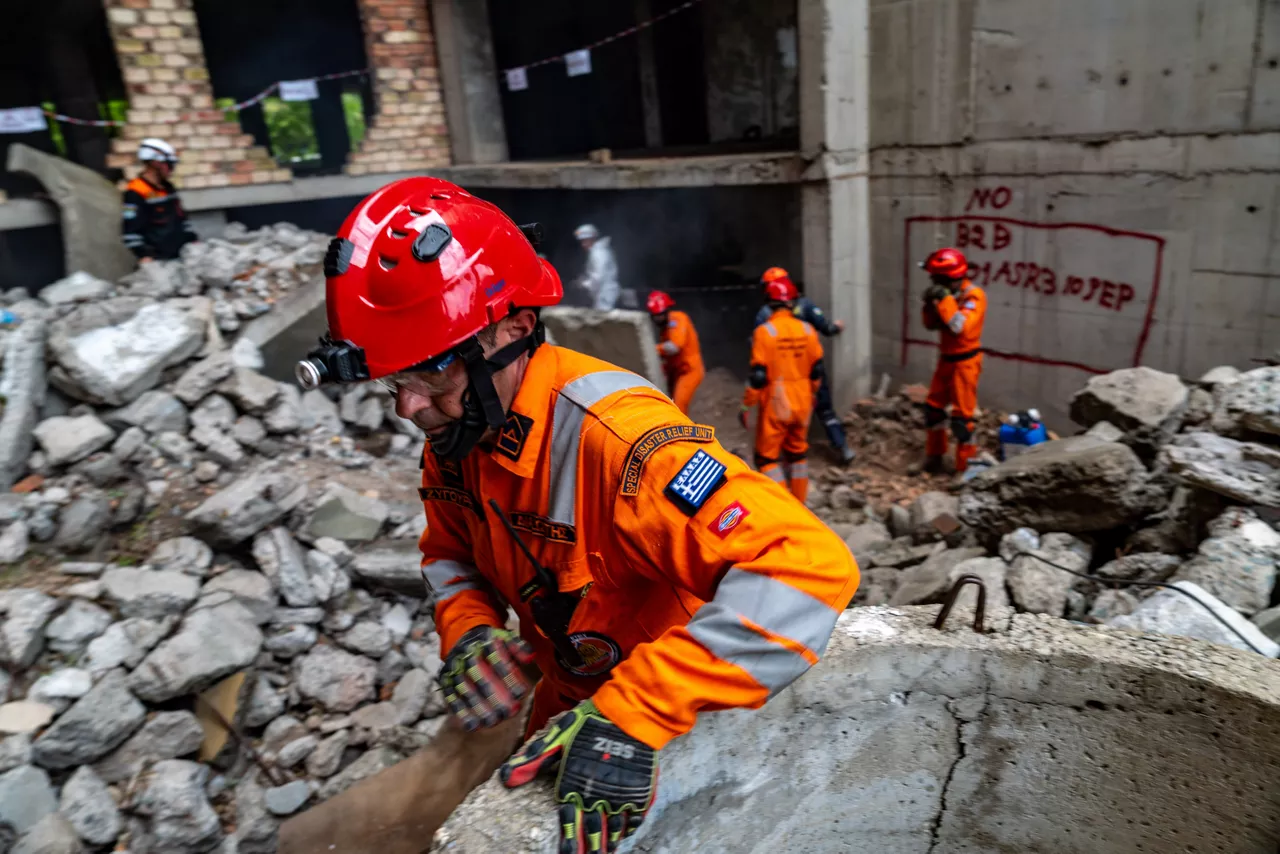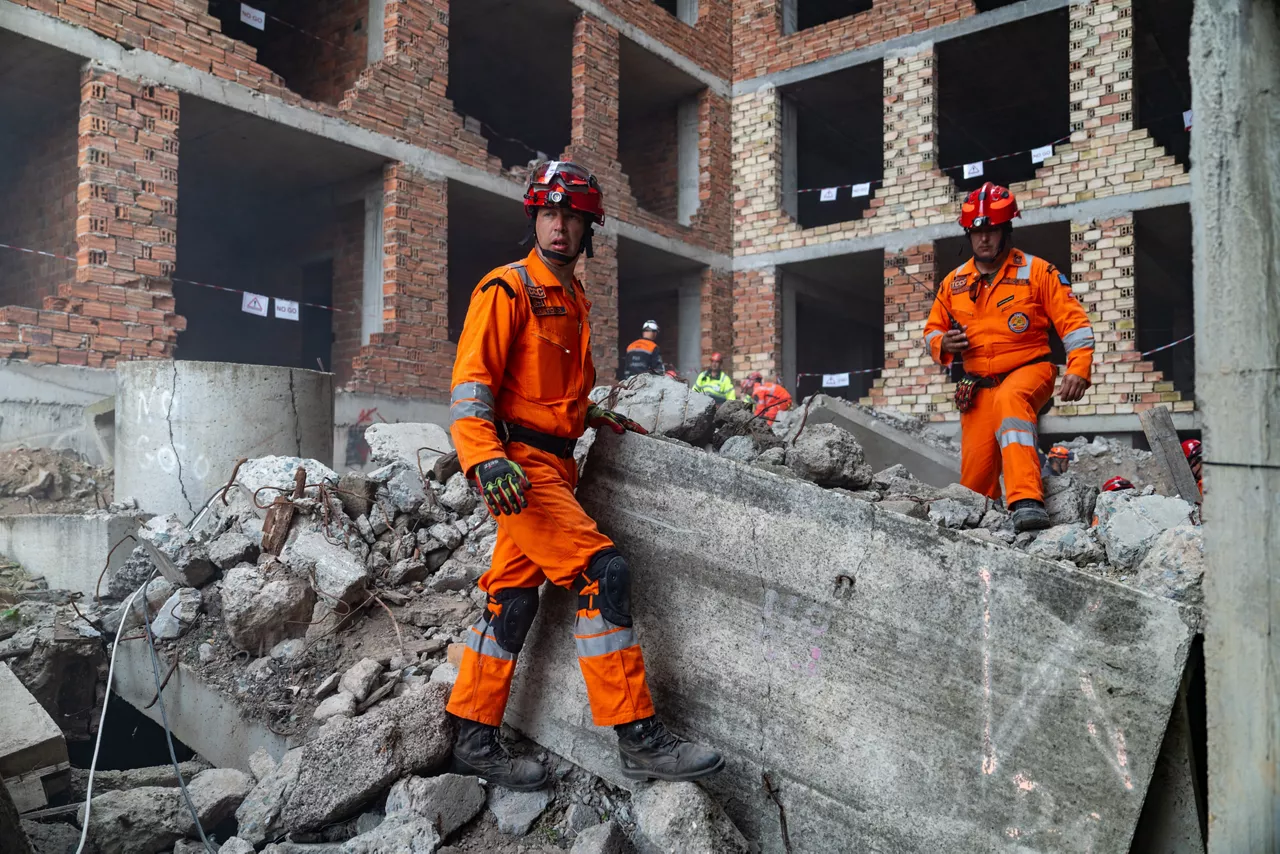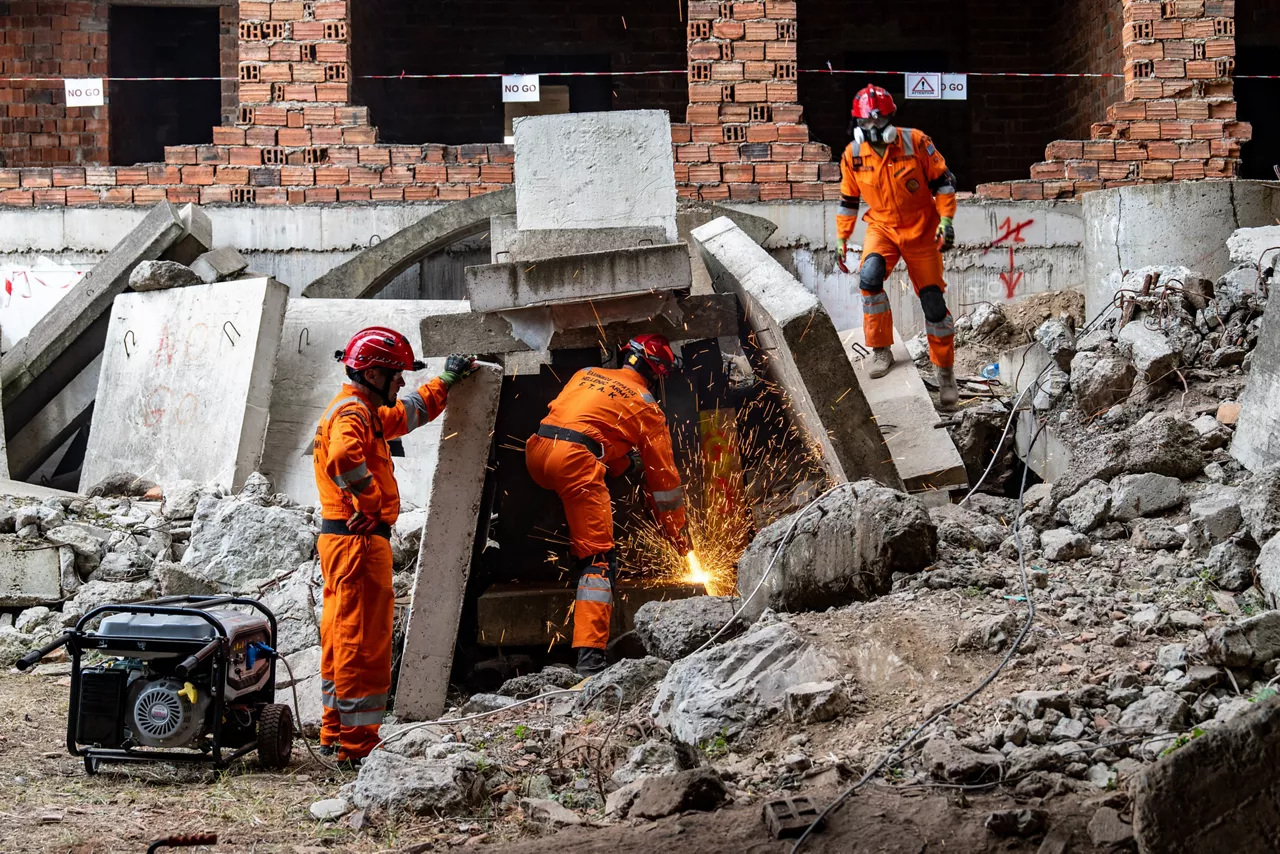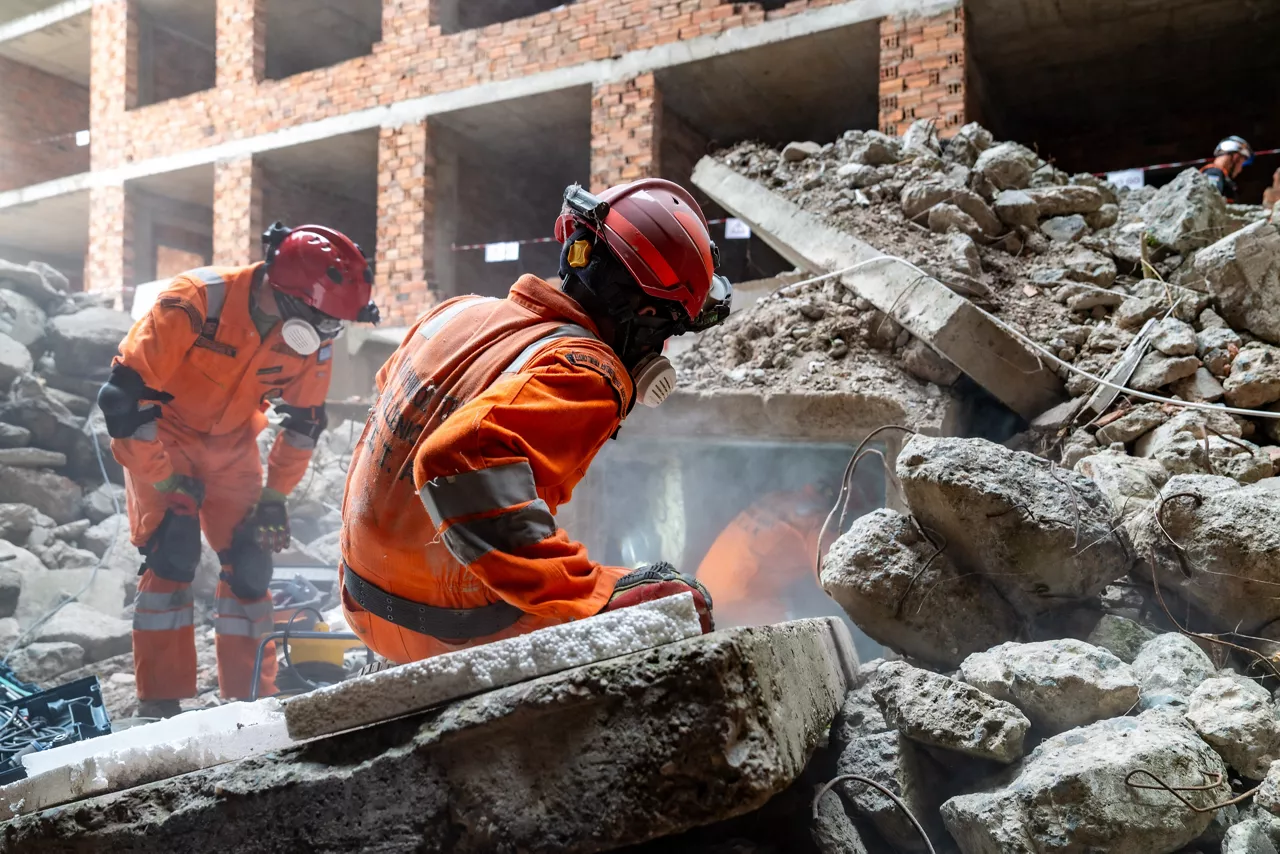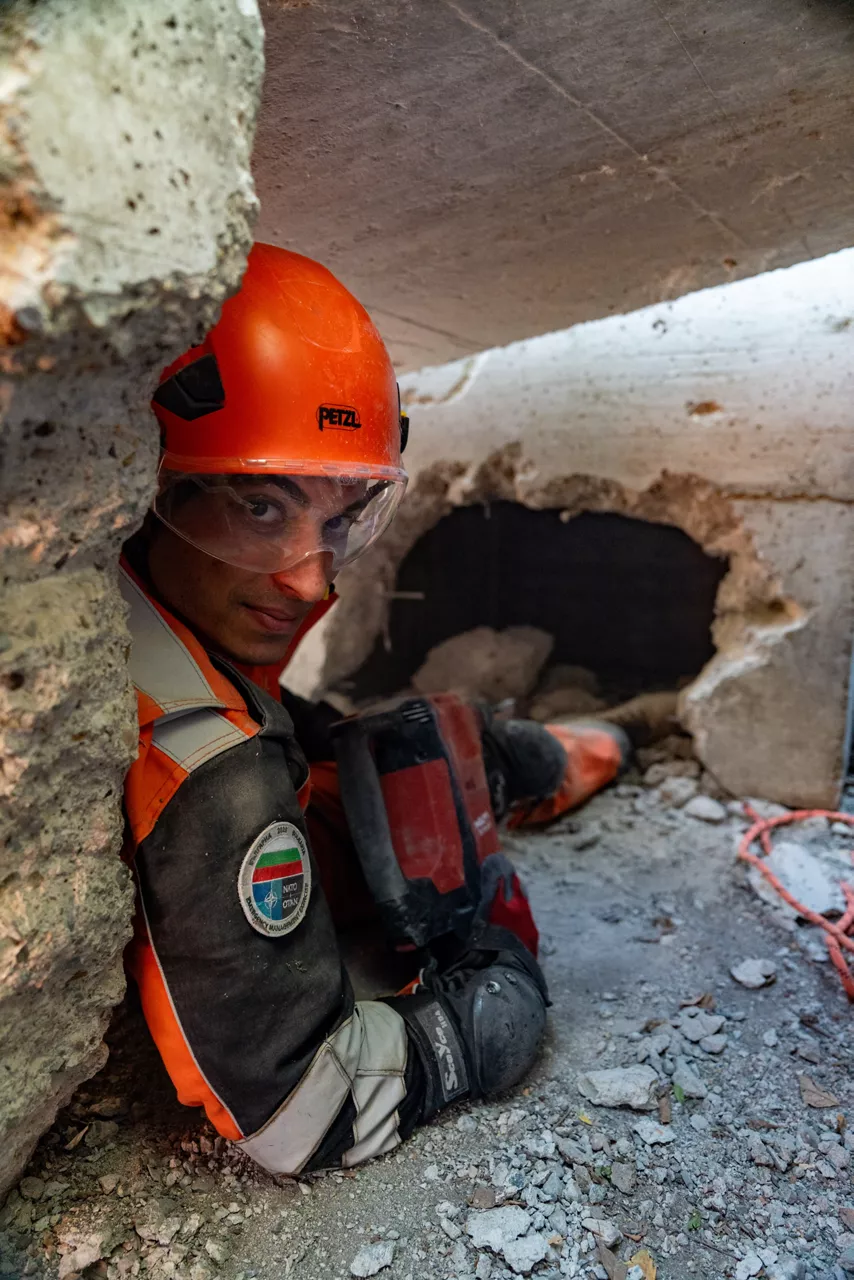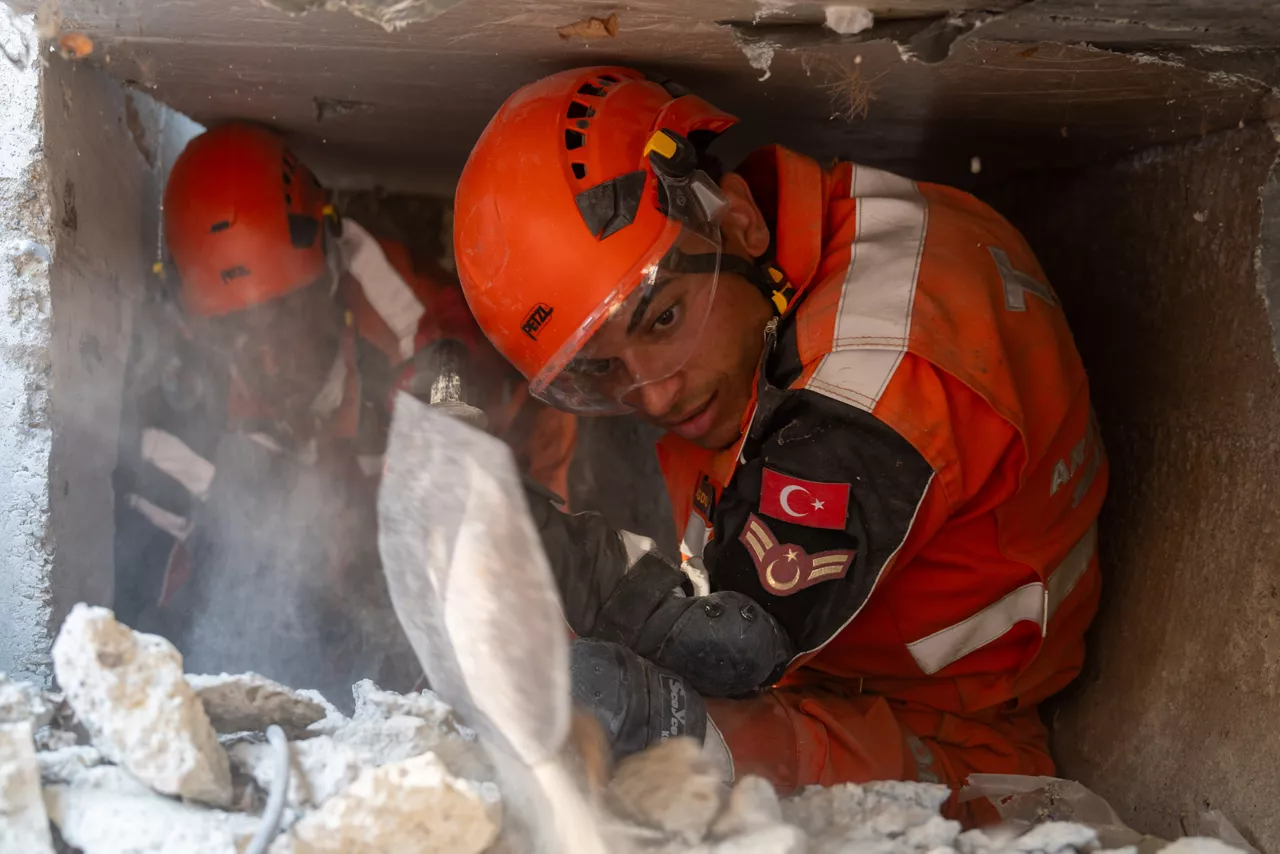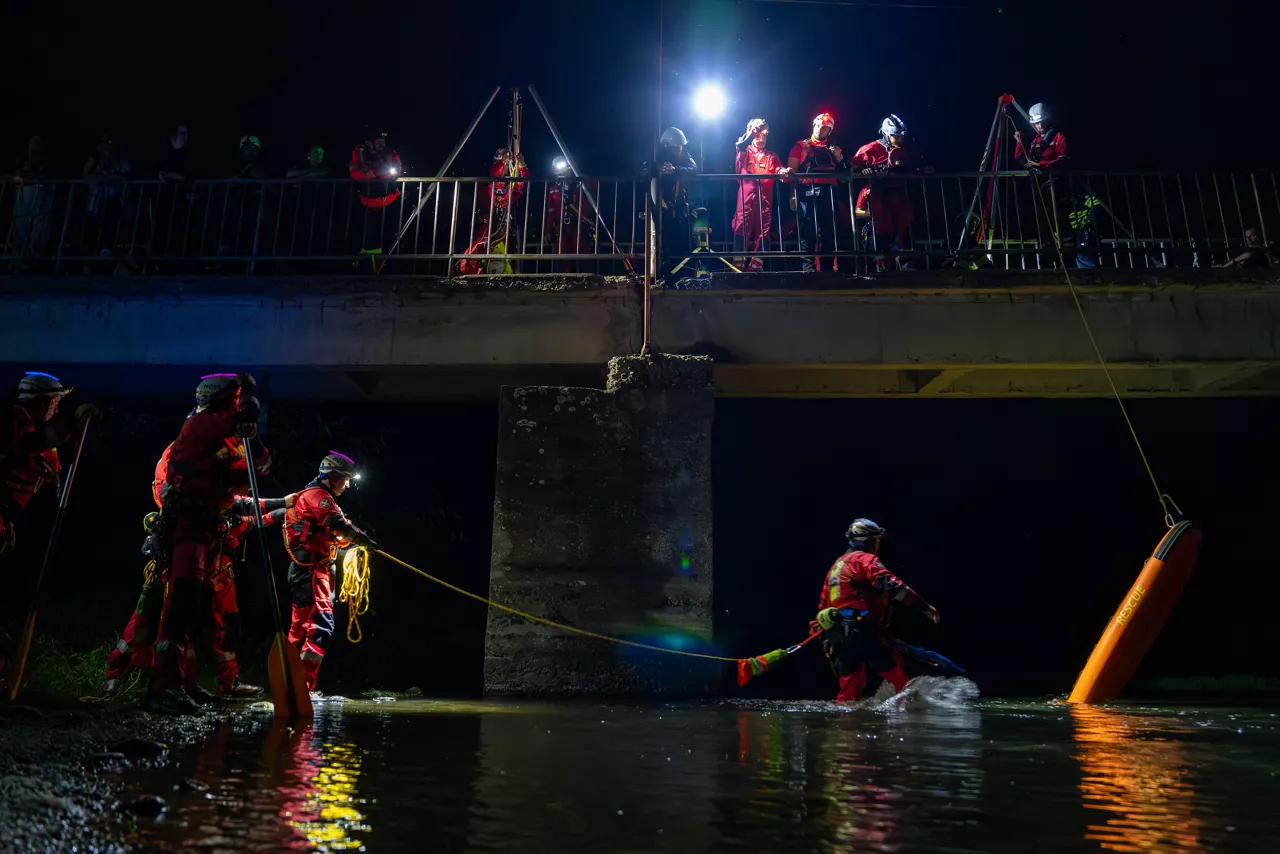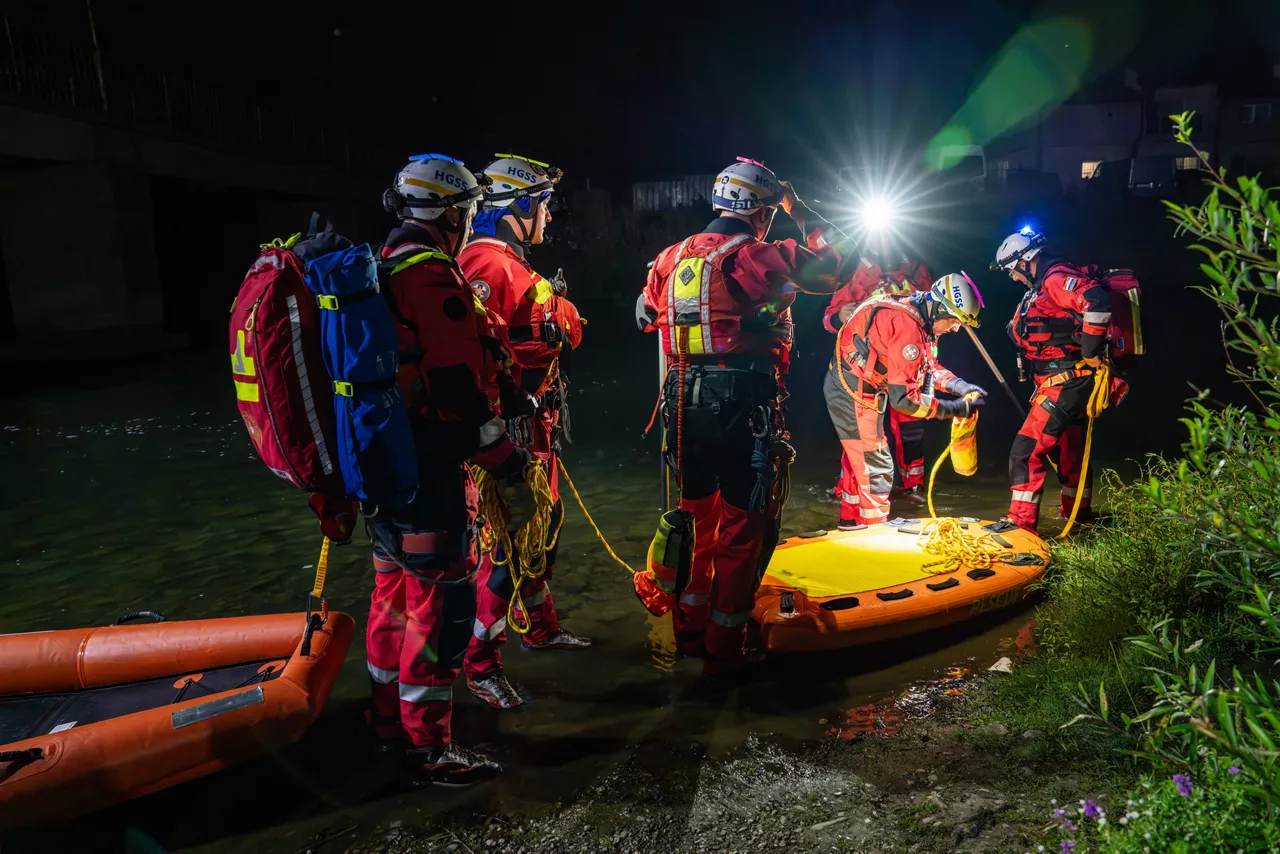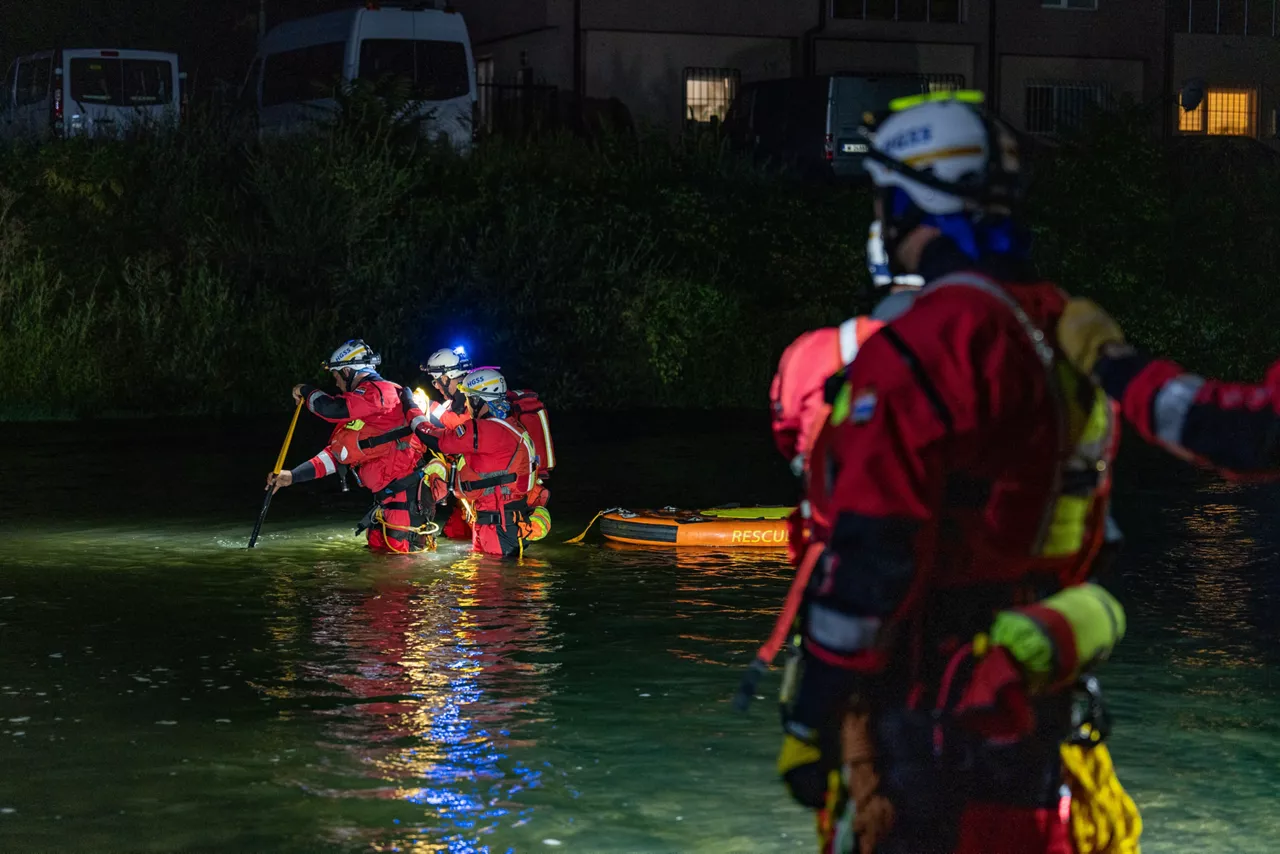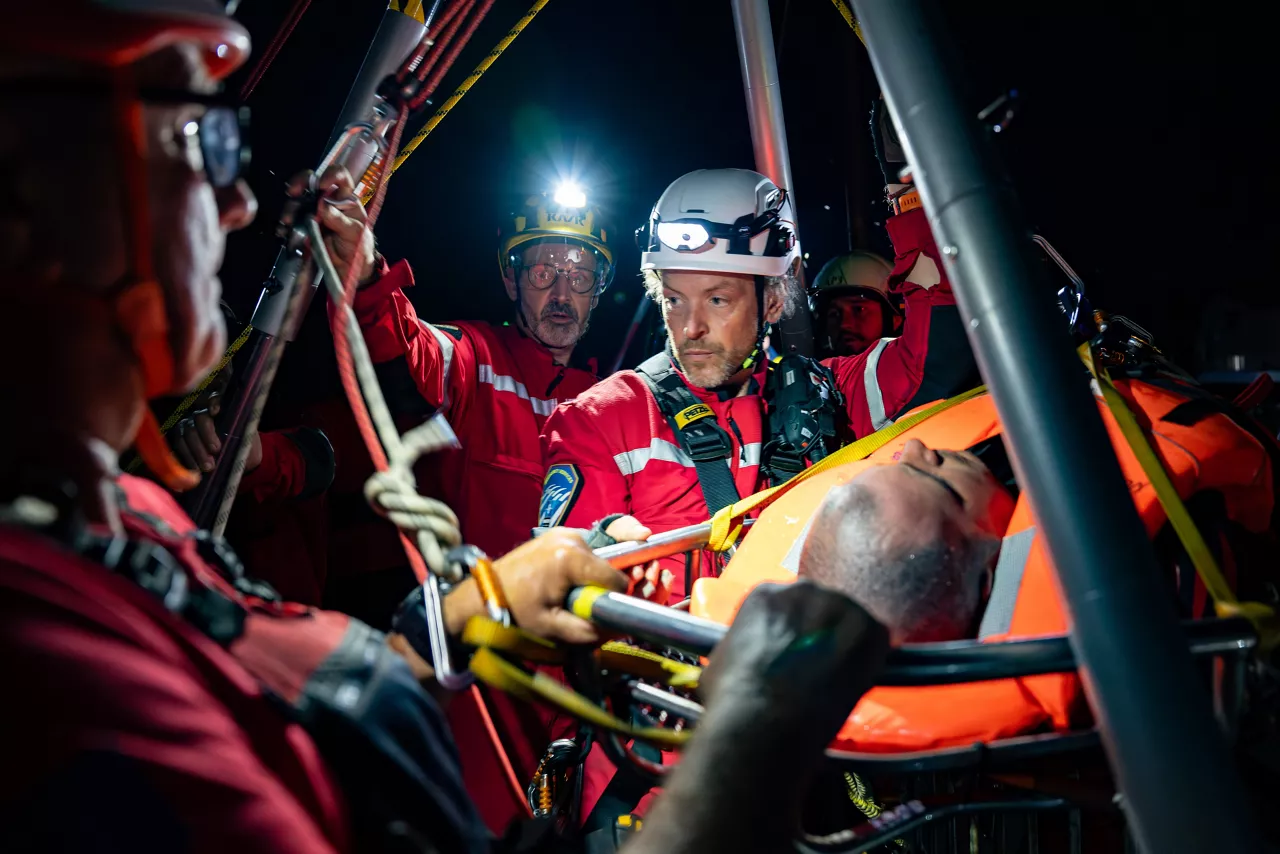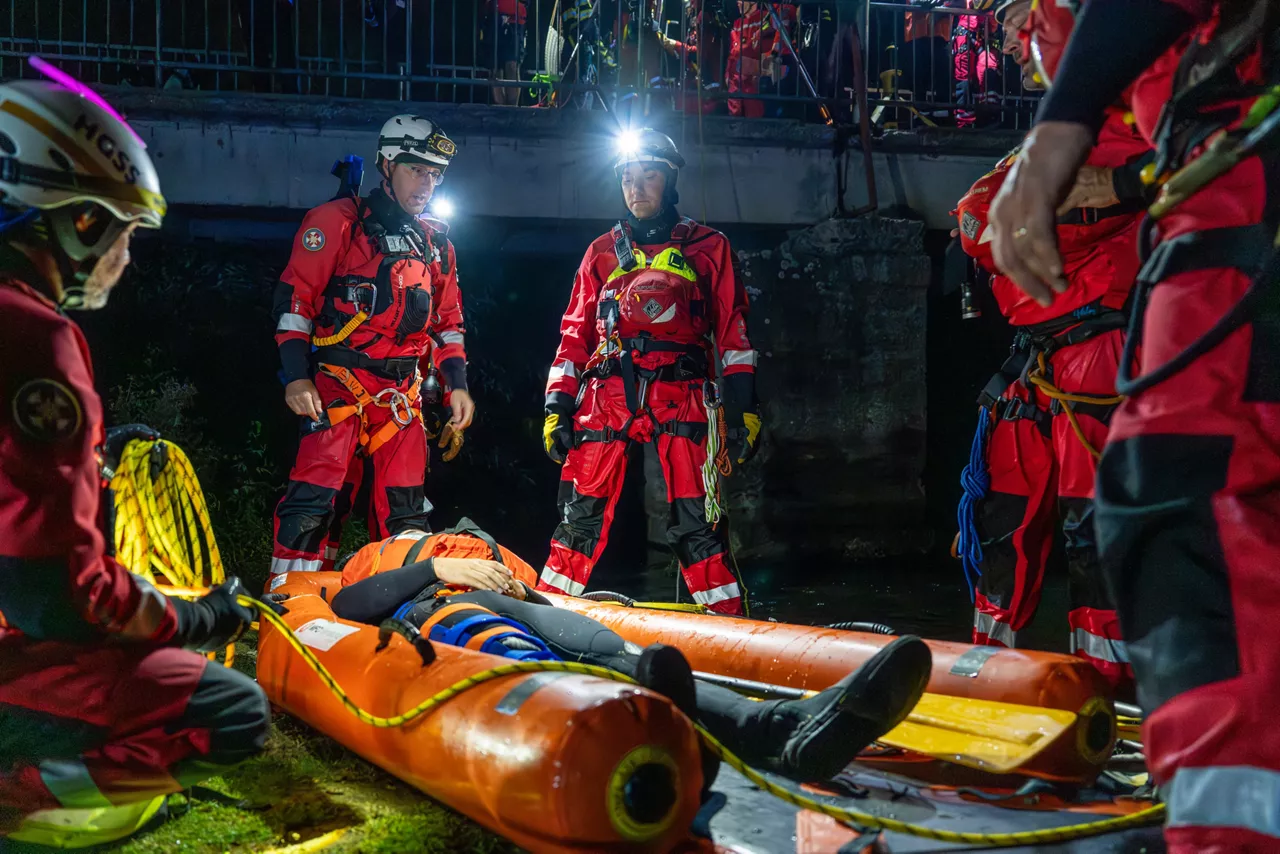Download NATO’s broadcast-quality video content free of charge

NATO MULTIMEDIA ACCOUNT
Access NATO’s broadcast-quality video content free of charge

Check your inbox and enter verification code
You have successfully created your account
From now on you can download videos from our website
Subscribe to our newsletter
If you would also like to subscribe to the newsletter and receive our latest updates, click on the button below.
Enter the email address you registered with and we will send you a code to reset your password.
Didn't receive a code? Send new Code
The password must be at least 12 characters long, no spaces, include upper/lowercase letters, numbers and symbols.
Your password has been updated
Click the button to return to the page you were on and log in with your new password.
From 7 to 12 September 2025, the civilian-led exercise “BULGARIA 2025”, co-organised by NATO’s Euro-Atlantic Disaster Response Coordination Centre (EADRCC) and the Bulgarian Ministry of Interior, took place in Montana, Bulgaria.
Following the official opening by NATO Deputy Secretary General Radmila Shekerinska and Bulgarian Interior Minister Daniel Mitov, over one thousand participants from 28 NATO Allies, 18 partner countries and 14 civilian and military organisations exercised together, to improve their ability to keep our citizens safe in a crisis.
In possibly the largest and most complex civil emergency exercise in the world this year, soldiers, scientists, and first responders worked together, to hone their skills and cooperation in responding to a natural disaster, technological incident, or act of terrorism.
Some 100 emergency vehicles, including medical helicopters, hyperbaric chamber trucks, ambulances and rescue boats were part of the exercise. The training took place across 21 diverse exercise sites; some 140 victims of various emergencies were saved in the different simulations.
In parallel with the field exercise, a strategic component in Sofia for decision-makers addressed civil-military coordination during emergencies, monitoring of and response to information threats, building preparedness, and the whole-of-government approach to crisis management. Participants learned about the impact of emerging disruptive technologies on crisis management, and on their work in future.
The exercise served as an example of how NATO’s partnerships bring concrete benefits to national and collective security. It strengthened cooperation between civilian and military actors in responding to a range of crises, including facilitation of vital civil cross-border transport, logistics, and emerging security challenges. It supported partners’ defence capacity-building, and helped improve Bulgaria’s ability to coordinate international crisis response operations, including as a host nation.
Related assets
GALLERIES
NATO Allies and partners strengthen emergency coordination in exercise “Bulgaria 2025”
09 September 2025 - 11 September 2025
A Greek search and rescue team member looks towards the camera with her search dog during an urban rescue training exercise. In one of the year’s largest and most complex civil emergency exercises, soldiers, scientists, and first responders trained in Bulgaria to strengthen coordination and readiness for large-scale disasters. The exercise, “Bulgaria 2025”, took place from 7 until 12 September 2025.
A Romanian medic looks towards the camera during an urban rescue training exercise. In one of the year’s largest and most complex civil emergency exercises, soldiers, scientists, and first responders trained in Bulgaria to strengthen coordination and readiness for large-scale disasters. The exercise, “Bulgaria 2025”, took place from 7 until 12 September 2025.
A Bulgarian pilot looks towards the camera during a training exercise. In one of the year’s largest and most complex civil emergency exercises, soldiers, scientists, and first responders trained in Bulgaria to strengthen coordination and readiness for large-scale disasters. The exercise, “Bulgaria 2025”, took place from 7 until 12 September 2025.
An Italian firefighter and a member of the Azerbaijani search and rescue team exchange tactics during a joint exercise focused on earthquake response. In one of the year’s largest and most complex civil emergency exercises, soldiers, scientists, and first responders trained in Bulgaria to strengthen coordination and readiness for large-scale disasters. The exercise, “Bulgaria 2025”, took place from 7 until 12 September 2025.
Azerbaijani and Italian rescue teams coordinate tactics during an urban search and rescue exercise. In one of the year’s largest and most complex civil emergency exercises, soldiers, scientists, and first responders trained in Bulgaria to strengthen coordination and readiness for large-scale disasters. The exercise, “Bulgaria 2025”, took place from 7 until 12 September 2025.
Members of the Bulgarian Armed Forces CBRN unit gear up for a chemical, biological, radiological, and nuclear (CBRN) defence exercise. In one of the year’s largest and most complex civil emergency exercises, soldiers, scientists, and first responders trained in Bulgaria to strengthen coordination and readiness for large-scale disasters. The exercise, “Bulgaria 2025”, took place from 7 until 12 September 2025.
Members of Azerbaijan’s urban search and rescue team coordinate strategies during a search and rescue exercise. In one of the year’s largest and most complex civil emergency exercises, soldiers, scientists, and first responders trained in Bulgaria to strengthen coordination and readiness for large-scale disasters. The exercise, “Bulgaria 2025”, took place from 7 until 12 September 2025.
Romanian firefighters search for victims during a simulated chemical, biological, radiological, and nuclear (CBRN) emergency exercise. In one of the year’s largest and most complex civil emergency exercises, soldiers, scientists, and first responders trained in Bulgaria to strengthen coordination and readiness for large-scale disasters. The exercise, “Bulgaria 2025”, took place from 7 until 12 September 2025.
Romanian firefighters search for victims during a simulated chemical, biological, radiological, and nuclear (CBRN) emergency exercise. In one of the year’s largest and most complex civil emergency exercises, soldiers, scientists, and first responders trained in Bulgaria to strengthen coordination and readiness for large-scale disasters. The exercise, “Bulgaria 2025”, took place from 7 until 12 September 2025.
Bulgarian Armed Forces CBRN specialists take part in a simulated chemical, biological, radiological, and nuclear (CBRN) defence exercise. In one of the year’s largest and most complex civil emergency exercises, soldiers, scientists, and first responders trained in Bulgaria to strengthen coordination and readiness for large-scale disasters. The exercise, “Bulgaria 2025”, took place from 7 until 12 September 2025.
Bulgarian Armed Forces CBRN specialists take part in a simulated chemical, biological, radiological, and nuclear (CBRN) defence exercise. In one of the year’s largest and most complex civil emergency exercises, soldiers, scientists, and first responders trained in Bulgaria to strengthen coordination and readiness for large-scale disasters. The exercise, “Bulgaria 2025”, took place from 7 until 12 September 2025.
Bulgarian CBRN specialists decontaminate Romanian personnel during a simulated chemical, biological, radiological, and nuclear (CBRN) defence exercise. In one of the year’s largest and most complex civil emergency exercises, soldiers, scientists, and first responders trained in Bulgaria to strengthen coordination and readiness for large-scale disasters. The exercise, “Bulgaria 2025”, took place from 7 until 12 September 2025.
A Bulgarian Armed Forces CBRN specialist searches for victims during a simulated chemical, biological, radiological, and nuclear (CBRN) defence exercise. In one of the year’s largest and most complex civil emergency exercises, soldiers, scientists, and first responders trained in Bulgaria to strengthen coordination and readiness for large-scale disasters. The exercise, “Bulgaria 2025”, took place from 7 until 12 September 2025.
A Bulgarian Armed Forces CBRN specialist rescues a simulated casualty during a chemical, biological, radiological, and nuclear (CBRN) defence exercise. In one of the year’s largest and most complex civil emergency exercises, soldiers, scientists, and first responders trained in Bulgaria to strengthen coordination and readiness for large-scale disasters. The exercise, “Bulgaria 2025”, took place from 7 until 12 September 2025.
A Bulgarian Armed Forces CBRN specialist searches for victims during a simulated chemical, biological, radiological, and nuclear (CBRN) defence exercise. In one of the year’s largest and most complex civil emergency exercises, soldiers, scientists, and first responders trained in Bulgaria to strengthen coordination and readiness for large-scale disasters. The exercise, “Bulgaria 2025”, took place from 7 until 12 September 2025.
Romanian CBRN specialists search for victims during a simulated chemical, biological, radiological, and nuclear (CBRN) defence exercise. In one of the year’s largest and most complex civil emergency exercises, soldiers, scientists, and first responders trained in Bulgaria to strengthen coordination and readiness for large-scale disasters. The exercise, “Bulgaria 2025”, took place from 7 until 12 September 2025.
Romanian CBRN specialists search for victims during a simulated chemical, biological, radiological, and nuclear (CBRN) defence exercise. In one of the year’s largest and most complex civil emergency exercises, soldiers, scientists, and first responders trained in Bulgaria to strengthen coordination and readiness for large-scale disasters. The exercise, “Bulgaria 2025”, took place from 7 until 12 September 2025.
Romanian CBRN specialists rescue a simulated casualty during a chemical, biological, radiological, and nuclear (CBRN) defence exercise. In one of the year’s largest and most complex civil emergency exercises, soldiers, scientists, and first responders trained in Bulgaria to strengthen coordination and readiness for large-scale disasters. The exercise, “Bulgaria 2025”, took place from 7 until 12 September 2025.
Bulgarian paramedics assess a simulated casualty during a chemical, biological, radiological, and nuclear (CBRN) defence exercise. In one of the year’s largest and most complex civil emergency exercises, soldiers, scientists, and first responders trained in Bulgaria to strengthen coordination and readiness for large-scale disasters. The exercise, “Bulgaria 2025”, took place from 7 until 12 September 2025.
Bulgarian Border Police prepare for a reconnaissance exercise. In one of the year’s largest and most complex civil emergency exercises, soldiers, scientists, and first responders trained in Bulgaria to strengthen coordination and readiness for large-scale disasters. The exercise, “Bulgaria 2025”, took place from 7 until 12 September 2025.
Romanian firefighters prepare for a rope rescue exercise. In one of the year’s largest and most complex civil emergency exercises, soldiers, scientists, and first responders trained in Bulgaria to strengthen coordination and readiness for large-scale disasters. The exercise, “Bulgaria 2025”, took place from 7 until 12 September 2025.
Bulgarian Border Police prepare for a reconnaissance exercise. In one of the year’s largest and most complex civil emergency exercises, soldiers, scientists, and first responders trained in Bulgaria to strengthen coordination and readiness for large-scale disasters. The exercise, “Bulgaria 2025”, took place from 7 until 12 September 2025.
A Ukrainian CBRN specialist looks toward the camera during a chemical, biological, radiological, and nuclear (CBRN) defence exercise. In one of the year’s largest and most complex civil emergency exercises, soldiers, scientists, and first responders trained in Bulgaria to strengthen coordination and readiness for large-scale disasters. The exercise, “Bulgaria 2025”, took place from 7 until 12 September 2025.
A Bulgarian Border Police officer conducts a reconnaissance exercise. In one of the year’s largest and most complex civil emergency exercises, soldiers, scientists, and first responders trained in Bulgaria to strengthen coordination and readiness for large-scale disasters. The exercise, “Bulgaria 2025”, took place from 7 until 12 September 2025.
Romanian firefighters rescue a simulated casualty during a rope rescue exercise. In one of the year’s largest and most complex civil emergency exercises, soldiers, scientists, and first responders trained in Bulgaria to strengthen coordination and readiness for large-scale disasters. The exercise, “Bulgaria 2025”, took place from 7 until 12 September 2025.
Emergency responders from Bulgaria and Romania carry a simulated casualty on a stretcher during a rope rescue exercise. In one of the year’s largest and most complex civil emergency exercises, soldiers, scientists, and first responders trained in Bulgaria to strengthen coordination and readiness for large-scale disasters. The exercise, “Bulgaria 2025”, took place from 7 until 12 September 2025.
An Italian firefighter performs underwater search and rescue during a training exercise. In one of the year’s largest and most complex civil emergency exercises, soldiers, scientists, and first responders trained in Bulgaria to strengthen coordination and readiness for large-scale disasters. The exercise, “Bulgaria 2025”, took place from 7 until 12 September 2025.
An Italian firefighter looks toward the camera during an underwater search and rescue training exercise. In one of the year’s largest and most complex civil emergency exercises, soldiers, scientists, and first responders trained in Bulgaria to strengthen coordination and readiness for large-scale disasters. The exercise, “Bulgaria 2025”, took place from 7 until 12 September 2025.
Greek search and rescue teams take part in an urban rescue training exercise. In one of the year’s largest and most complex civil emergency exercises, soldiers, scientists, and first responders trained in Bulgaria to strengthen coordination and readiness for large-scale disasters. The exercise, “Bulgaria 2025”, took place from 7 until 12 September 2025.
Greek search and rescue teams take part in an urban rescue training exercise. In one of the year’s largest and most complex civil emergency exercises, soldiers, scientists, and first responders trained in Bulgaria to strengthen coordination and readiness for large-scale disasters. The exercise, “Bulgaria 2025”, took place from 7 until 12 September 2025.
Greek search and rescue team cuts through an obstacle during an urban rescue training exercise. In one of the year’s largest and most complex civil emergency exercises, soldiers, scientists, and first responders trained in Bulgaria to strengthen coordination and readiness for large-scale disasters. The exercise, “Bulgaria 2025”, took place from 7 until 12 September 2025.
Greek search and rescue team cuts through an obstacle during an urban rescue training exercise. In one of the year’s largest and most complex civil emergency exercises, soldiers, scientists, and first responders trained in Bulgaria to strengthen coordination and readiness for large-scale disasters. The exercise, “Bulgaria 2025”, took place from 7 until 12 September 2025.
Members of the Azerbaijani search and rescue team take a break after cutting through debris during an urban rescue training exercise. In one of the year’s largest and most complex civil emergency exercises, soldiers, scientists, and first responders trained in Bulgaria to strengthen coordination and readiness for large-scale disasters. The exercise, “Bulgaria 2025”, took place from 7 until 12 September 2025.
A member of the Turkish emergency search and rescue unit looks toward the camera during an urban rescue training exercise. In one of the year’s largest and most complex civil emergency exercises, soldiers, scientists, and first responders trained in Bulgaria to strengthen coordination and readiness for large-scale disasters. The exercise, “Bulgaria 2025”, took place from 7 until 12 September 2025.
Turkish emergency search and rescue unit clear debris during an urban rescue training exercise. In one of the year’s largest and most complex civil emergency exercises, soldiers, scientists, and first responders trained in Bulgaria to strengthen coordination and readiness for large-scale disasters. The exercise, “Bulgaria 2025”, took place from 7 until 12 September 2025.
Firefighters from NATO Headquarters join Croatian and Ukrainian search and rescue teams in a river rescue training exercise. In one of the year’s largest and most complex civil emergency exercises, soldiers, scientists, and first responders trained in Bulgaria to strengthen coordination and readiness for large-scale disasters. The exercise, “Bulgaria 2025”, took place from 7 until 12 September 2025.
Croatian search and rescue personnel conduct a river rescue training exercise. In one of the year’s largest and most complex civil emergency exercises, soldiers, scientists, and first responders trained in Bulgaria to strengthen coordination and readiness for large-scale disasters. The exercise, “Bulgaria 2025”, took place from 7 until 12 September 2025.
Members of the Croatian search and rescue team scan the river for victims during a river rescue training exercise. In one of the year’s largest and most complex civil emergency exercises, soldiers, scientists, and first responders trained in Bulgaria to strengthen coordination and readiness for large-scale disasters. The exercise, “Bulgaria 2025”, took place from 7 until 12 September 2025.
Firefighters from NATO Headquarters assist Croatian and Ukrainian teams in rescuing a simulated casualty during a river rescue exercise. In one of the year’s largest and most complex civil emergency exercises, soldiers, scientists, and first responders trained in Bulgaria to strengthen coordination and readiness for large-scale disasters. The exercise, “Bulgaria 2025”, took place from 7 until 12 September 2025.
Croatian search and rescue personnel conduct a river rescue training exercise. In one of the year’s largest and most complex civil emergency exercises, soldiers, scientists, and first responders trained in Bulgaria to strengthen coordination and readiness for large-scale disasters. The exercise, “Bulgaria 2025”, took place from 7 until 12 September 2025.
Firefighters from NATO Headquarters join Croatian and Ukrainian search and rescue teams in a river rescue training exercise. In one of the year’s largest and most complex civil emergency exercises, soldiers, scientists, and first responders trained in Bulgaria to strengthen coordination and readiness for large-scale disasters. The exercise, “Bulgaria 2025”, took place from 7 until 12 September 2025.
GALLERIES
NATO Allies and partners strengthen emergency coordination in exercise “Bulgaria 2025”

NATO Allies and partners strengthen emergency coordination in exercise “Bulgaria 2025”
NATO Allies and partners strengthen emergency coordination in exercise “Bulgaria 2025”
Usage rights
CLOSE
This media asset is free for editorial broadcast, print, online and radio use. It is restricted for use for other purposes.
Related content
/


